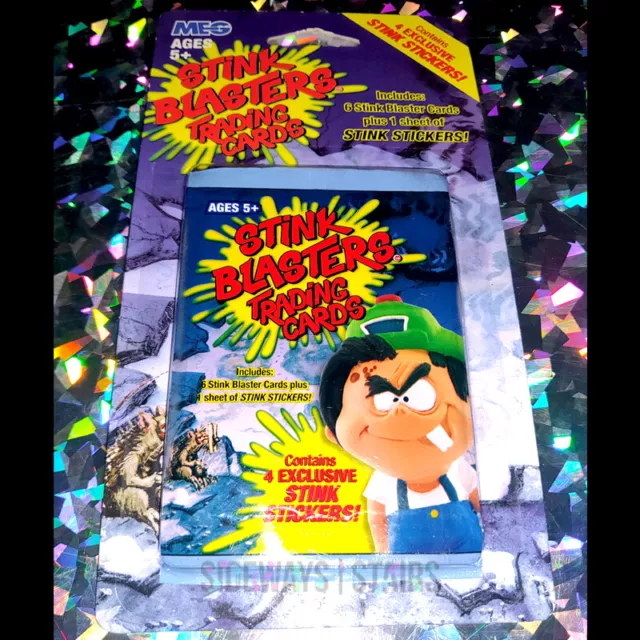STINK BLASTERS TRADING CARDS 16 PACKS sealed 2002 stink stickers novelty RARE
£210.38 Buy It Now or Best Offer, Click to see shipping cost, eBay Money Back Guarantee
Seller: sidewaysstairsco ✉️ (1,183) 100%,
Location: Santa Ana, California, US,
Ships to: US & many other countries,
Item: 194223171348
STINK BLASTERS TRADING CARDS 16 PACKS sealed 2002 stink stickers novelty RARE. Check out our other new and used items>>>>>HERE! (click me) FOR SALE: A bundle of rare card packs from an obscure and unusual product line 2002 STINK BLASTERS TRADING CARDS (16 PACKS) DETAILS: These trading cards Stink ! "Stink Blasters collectable game cards provide a hip, funny, grungy background story for each figure in the Stink Blasters line. The history and family tree for each character supplies the reason for his unique stink. Each character has six cards for a total of 144 available cards for trading and playing. Cards detail favorite foods, hobbies, best buddy or arch-enemy and life long philosophy as expressed by his 'motto.' Collectable game cards come in packs of six, plus one card with four double adhesive Stink Stickers. Stink Stickers are a 'calling card' of sorts — smelly stickers one can leave behind as an enduring if not endearing memento."(MEG Toys) "'Stink Blasters® are just good, old-fashioned boys’ fun,' notes Joe Morrison, CEO of MEG Toys, the makers of Stink Blasters®. 'It’s low tech and non-violent, with a unique look and great product feature that makes these collectibles something every boy will want.'" (MEG Toys) What's Included?: 16 individually packaged sealed packs of Stink Blasters Trading Cards -Each pack contains 6 trading cards and 1 sticker card -Total of 96 trading cards and 16 sticker cards About MEG: "MEG is an El Segundo, California-based product development, manufacturing and licensing company, specializing in children’s character lines, toys and licenses. In addition to Stink Blasters® some of MEG’s other innovative brands include Puppy In My Pocket®, Kitty In My Pocket®, Jungle In My Pocket®, Pony In My Pocket® and Monster In My Pocket®, and Scent Stars® which have been licensed and distributed in over 50 countries worldwide." (MEG Toys) CONDITION: All packs are sealed; mint in blister packages. Packaging may have light shelf wear. Please see photos. *To ensure safe delivery all items are carefully packaged before shipping out* THANK YOU FOR LOOKING. QUESTIONS? JUST ASK. *ALL PHOTOS AND TEXT ARE INTELLECTUAL PROPERTY OF SIDEWAYS STAIRS CO. ALL RIGHTS RESERVED.* "Stink Blasters are a set of children's toy manufactured by Morrison Entertainment Group and distributed in thirty-one countries.[1] The toys were first released in the early 2000s, and Series 2 was released in 2005. A series 3 was a prototype. The range consists of 24 collectable action figures per series, which release unpleasant odours when squeezed.[2] However, the scents are not unbearably bad, but rather a mildly stinky scent, something that their target audience, young boys ages 5 and up, would love.... History The figures are three inches tall. They feature a hard, small plastic body and a large, hollow rubber head. When you lightly squeeze the head, a small hole, usually located near the mouth, emits a stench. The dolls can be squeezed over 30,000 times before losing their scents, ensuring efficiency. The toys were released to Chicago for test marketing, because it is "the windy city" and sold out in almost every major store. The toys were so successful, that it led to a nationwide rollout in February 2004, priced at $4.99 each so kids could buy them themselves. Soon, the toys were available in 34 countries. Production MEG has never explicitly described what goes into making the scents, because they are afraid of knock off brands. They have said that to make the scent formulas, they use about 95 percent polypropylene glycol (used most commonly as a moisture-carrying agent in cosmetics), and the last 5 percent are oils, food flavorings and extracts. Scientists carefully analyze the scents to match what they are supposed to smell like. Another important factor in the scents is the emission of cyclohexanone and toluene. Though the chemicals are naturally toxic, MEG is careful to use them at levels much lower than established permissible exposure limits, so they are safe.[3] They make the formulas in laboratories in the United States, although the toys are produced in China. This is so because they want to control the quality of the toys. MEG is also careful not to include materials that one could be allergic to in the toys.[4] After a year of development, the company had an idea to make a town called Smellville, full of stinky children who had friends and nemeses and varying degrees of stink power. When the toys were packaged, each came with a plastic "stink containment unit" to store it in and to hide the smell. The "stink containment unit" also had a clip, so you could attach it to things for travel, and to avoid losing it. And, rather than simply names, designs and their distinctive scents, the toys also come with trading cards that go farther into their backstories. They are rated on their scents and are given a fictional biography, comically detailing their favorite foods and archenemies. This allows the toys to be more three-dimensional and relatable to kids, as they are not just a face, but a detailed character. Availability These dolls were once a popular toy in the United States. After a few years, however, they slowly disappeared off the market, as the demand for them had slowly declined. They were re-released several years later in the United Kingdom, with some limited success, however, not nearly to the levels once had in America. Stink Blasters released 200,000 units to the Czech Republic, but there was little success. Stink Blasters slowly became extinct. They achieved some more success in places like Italy and Australia. Toy collectors try to find the rare toys, which have begun to fetch high prices. They can be found on online auctions, from places such as Europe, as they have nearly fallen into obscurity in the states.[5] Toys Series One Stench Bros. Garbage Truck Chuck Barfin' Ben Porta Potty Paul Tony Anchovy Veggies Garlic Gus Broccoli Bill Cauliflower Carl Blue Cheese Charlie Nature Crew Cow Pie Pete Skunk Punk Pig Boy Matty Manure B.O. Boys B.O. Brian Toe Jam Jimmy Sweat Sox Sammy Rotten Egg Reggie Breathers Dog Breath Danny Fish Mouth Fred Lizard Lips Lenny Monster Mouth Gasser Guys The Master Blaster Burpin' Buddy Butt Breath Bob The Silent Gasser Series Two Breathers Toxic Tyler Spewy Huey Stench Bros. Chill E. Dawg Joey Never Wash Nick The Dukes The Duke of Puke Pizza Face Pat Oil Slick Rick Dude Boy Doug Clammy Cliff Dandy Doo Dave Nature Crew Rankin' Ryan Wart Hog Henry The Zoo Crew Rat Boy Rob Vinnie the Vulture Elephant Drop Eric Zoo Boy Zach Camel Mouth Chris Monkey Cage Mike Veggies Jurassic Josh Rotten Onion Ollie B.O. Boys Ear Wax Max Armpit Andy Gasser Guys Fartasaurus Frank Billy Bob Booger Series Three A special Series III of Stink Blasters was produced for test markets, but never officially released. They contain only 12 figures, and it is believed by the few who know about them that the series was never actually finished and was given up on due to declining sales or impracticality of the series. The series was so small that, whereas the other two sets were divided into several groups, Series III was only divided into two groups. However, Series III did bring something new to the table, as each figure had its own accessory, which had a scent of its own. The Band This group revolved entirely around musicians, one of which was a girl, a first for the series. Skunk Punk, the apparent guitarist of the band, was used in Series I. Smooth Sounding Sammy DD Drum Boy Sweet Lips Suzie Skunk Punk (previously appeared in Series I) G Tar Garry Agent Boy Arnie Smellville's Finest This group focused entirely on the adults of Smellville, also a first for the series. The adults apparently stink like the children, despite having jobs. Principal Prickly Detective Ratzzo Poppa Anchovy Mayor Poochie Chef Grimee Coach Grunge So few people know about this "mini-series" that it is not even considered a part of the Stink Blasters continuity. The vice president of MEG Toys, Daniel Stenton, has announced it will make a companion line of figures, called Scent Stars, that will be girl dolls with pretty faces and pleasant scents such as roses, bubble gum, and cinnamon (season one and two were all grotesque-looking boy figures with disgusting scents), as Stenton has stated that girls, the target audience of the series, would not be interested in nasty things, and that nobody would want to buy a bad smelling female doll, as girls are not known for being grungy. The Scent Stars line will be a new way of taking advantage of the Stink Blasters technology, by not only reaching a new audience, but using it for different scents." (wikipedia.org) "Stink Blasters Stink Blasters® is a line of collectible action figures, with “d’stinktive” names that relate to their special “blasting” powers. Rotten Egg Reggie, Skunk Punk, The Silent Gasser and Sweat Sox Sammy are only a few of the smelly, but lovable characters who live in Smellville. This novelty line became a worldwide hit in 2003 with boys, big and small, who all think bad smells are funny. Stink Blasters is currently being developed as a short form entertainment property and smells like success! This line is loaded with creative assets including fantastic art, hilarious character bios, comics, photos, animation, theme song and a highly entertaining back-story." (megtoys.com) "Stink Blasters Edit Comments (0) Share Stink Blasters are a set of children's toy manufactured by Morrison Entertainment Group and distributed in thirty-one countries. There are three series, where the two first series consist of 24 collectable action figures, while the last one only had 12. The first toys were released in the early 2000s, and Series 2 was released in 2005. Series 3 was produced for test markets, but never officially released. History The toys, which were inspired by the popular Breath Blasters from the 1980s, are three inches tall. They feature a hard, small plastic body and a large, hollow rubber head. When you lightly squeeze the head, a small hole, usually located near the mouth, emits a stench. The toys can be squeezed over 30,000 times before losing their scents, ensuring efficiency. The toys were released to Chicago for test marketing, because it is "the windy city" and sold out in almost every major store. The toys were so successful, that it led to a nationwide rollout in February 2004, priced at $4.99 each so kids could buy them themselves. Soon, the toys were available in 34 countries. Crews Smellville is a big place with many different types of people, and each Stink Blaster need it's own crew to hang out with its friends. In total there are 10 different crews. B.O. Boys Breathers Gasser Guys Nature Crew Smellville's Finest Stench Bros. The Band The Dukes The Zoo Crew Veggies" (stinkblasters.fandom.com) "Stink Blasters is a new toy product line of 24 collectable figures and collectable game cards. The Stink Blasters figures are characters endowed with d stinktive powers related to their monikers; i.e., Sweat Sox Sammy and Rotten Egg Reggie smell like well, you know! Each Stink Blaster figure has a soft "squeezable" head that blasts the character s namesake odor when pressed. Smelly but loveable, silent but deadly — Stink Blasters are charming their way into the hearts of boys and anyone who still loves a good "pull my finger" joke.MEG is a Manhattan Beach, California-based product development, manufacturing and licensing company specializing in children s character lines, toys and licenses. Stink Blasters is the collaborative brainchild of the MEG team, led by Joe Morrison. Prior to founding MEG, company President Joe Morrison was Executive Vice President of Marketing at Mattel.A total of 24 characters have been developed with 24 more on the way. Characters include The Silent Gasser, The Master Blaster, Butt Breath Bob, Porta Potty Paul and Barfin Ben among the growing collection of kids who are long on good intentions, but short on personal hygiene. Reminiscent of Mad Magazine humor, all Stink Blasters share the trait of gross, yucky, very common "boy" behavior but they also share a non-violent, non-destructive sensibility that makes them fresh, fun and safe. They all mean well, but boy, could they use a bath! Stink Blasters are divided into six crews of four Blasters each. Each crew is based on a prevailing theme including the B.O. Boys, Breathers, Gasser Guys, Nature Crew, Veggies and Stench Brothers. Crews are made up of stink-friendly buddies that hang together in the town of Smellville and will ultimately compete against each other in the annual Blaster Bowl. Stink Blasters Overview:PRODUCT FACT SHEETSTINK BLASTERS“Company Overview:Characters:Crews:MORE... Stink Blasters collectable game cards provide a hip, funny, grungy background story for each figure in the Stink Blasters line. The history and family tree for each character supplies the reason for his unique stink. Each character has six cards for a total of 144 available cards for trading and playing. Cards detail favorite foods, hobbies, best buddy or arch-enemy and life long philosophy as expressed by his "motto."Collectable game cards come in packs of six, plus one card with four double adhesive Stink Stickers. Stink Stickers are a "calling card" of sorts — smelly stickersone can leave behind as an enduring if not endearing memento.The built-in Stink-Power Rating system is displayed on the bottom of all trading cards and provides the basis for a "stink" competition and various trading and gaming opportunities.Boys ages 6+ .but experience has proven that the fun spreads as fast as the stink as siblings, dads and eventually moms get a laugh out of these gross but lovable characters.Stink Blasters: $4.99Trading Cards: $1.99Stink Blasters MEG 2003Available worldwide in 34 countries.Available in the U.S. at major chains and toyretailers beginning February 2004." (megtoys.com) "Stink Blasters™ Smelled by Mr. Stinkhead There's a new group of kids on the block, and damn, do they stink. No, they really stink. Stink Blasters™ are new 3 inch figures that emit a foul odor when you squeeze their head. They're irrevrant, they're offensive, and they're disgusting. I'm in love. Newly created by MEG, the Stink Blasters come in an initial assortment of 24. Each with a unique sculpt and scent. They are divided into six crews of four figures, organized by odor theme. The B.O. Brothers smell like body odor. The Breathers have horrid breath. The Gasser Guys are silent, but deadly. The Nature Crew is all natural. The Veggies smell like rotting beans, and the Stench Brothers, are just disgusting. Click for reverseEach figure comes blister packed with a trading card and a carrying case. This snap-tight case will become the most important thing in the world. It does a great job of keeping the stench in, and prevents accidental discharge when in your pocket. It also has a handy clip for tagging along on your pants. Like I don't have enough problems with odors clinging to my pants. The figure itself is impressive. The sculpt is detailed and expressive. They're each uniquely different, and they don't look like rip-offs from existing collectible novelties. They stand pretty well for having massive stink-filled heads, and their paint jobs are cool. Here are some pics of the Silent Gasser, Master Blaster, Butt Breath Bob, and Porta Potty Paul. Notice the conspicuous brown stains I have Cow Pie Pete™ (above) who is supposed to smell like cow pies. C'mon now, keep up! It smells. I have been giving people just a whiff of the stink containment unit instead of the full blast from squeezing his cranium. (I give it a 6 on the convenient Millionaire Playboy Stink-O-Meter below) The commercial (7.3 Mb) recommends a full blast however. Especially if you are a boy, and especially if your victim is a girl. Wearing pink. And has cooties. Barfin BenI think these things are great. I've smelled Barfin' Ben™ (left) and he gets an 8 on our scale below. I am equally repulsed yet drawn in. Much like watching I'm A Celebrity, Get Me Out of Here. Ok, I'm sorry, it's not that repulsive. The Stink Blasters™ are going international too. Set to be released in over 30 countries, kids are going to want to collect the foreign translations as well. Barfin' Ben is Vito Vomito in Italian and Cow Pie Pete becomes Toni Caca de Vaca in Spanish. They're planning full accessories too, such as vehicles, a battle arena, additional trading cards, and scratch-n-sniff stickers. If they keep the price point low enough that kids can afford them with their allowance, they'll do great. I can safely predict parents will not be buying these things for their kids. Check out the Stink Blaster™ website, it has great info and pics on all of the characters and their back stories. Also check out our review of the Stink Blaster Blaster, the gun that shoots stinky air 15 feet, and then cruise by and see our Stink Blaster coverage at Toy Fair 2004. Here's the packaging, so you know what to look for." (millionaireplayboy.com) "What's The Big Stink?Here's what folks are saying about Stink Blasters™.Stink Blasters and all characters and likenesses are TM & © MEG 2003To learn more about Stink Blasters, visit www.StinkBlasters.com “These are without question the most foul-smelling, stomach-curdling, tear-inducing things available. We love them.” – Maxim"They’re irreverent, they’re offensive, and they’re disgusting. I’m in love.” – MillionairePlayboy.com“Kids can't get enough!!”– Tech TV“There's a funky new smell coming to town and it's driving kids wild!”– WB News, St. Louis, MO"Thanks for making stinky cool toys that blast that unsupecting someone (including annoying brothers and girls!)"– Jared, Age 9, USA“This toy stinks --and that's high praise”– Chicago Sun-Times“These stinky little guys are flying off the shelves”.– KB Toys Atlanta, GA"Stink Blasters have become the latest craze at my school."- Fred, Age 12, UK"Please don't bring Stink Blasters to school as they are considered offensive. If you bring them along, expect to have them confiscated." - Lyn Tout, Principal, Werribee Primary School, AUOne of the top 10 toys kids love...but drive parents crazy. – Toy Wishes MagazineCondemnedby the PerfumeAssociation of America!" (megtoys.com) " The stench is on the rise as kids all over the world get their hands on Stink Blasters – the smelliest item since your 7th grade science project. With 24 collectable Stink Blasters, kids will squeeze the heads of their favorite foul figures emitting the deadliest odors known to man. Not only are the scents deadly, but they are also dead on. Dog-Breath Danny, Barfin’ Ben, and Cow-Pie Pete (to name a few) proudly proclaim that their stinks are true to their sources. Already a big seller in Europe, Chicago will be one of the first North American cities to catch a whiff. On August 25th, Stink Blasters will make their debut in Chicago. As a special treat there will be personal appearances made by Spin Master’s stinky mascots at select Chicago Toys-R-Us locations. Available this fall in all major department and toy stores across America, Stink Blasters will run $4.99 and will last over 30,000 stinky blasts. Recommended for ages 6+. When told that the whole idea just stinks, inventor Joe Morrison took it as a compliment. By combining the classic stink-bomb with a story line that only Mad Magazine could dream of, the Stink Blasters’ saga emits a stale tale of a town called Smellville and its reeking population. Kids can collect game cards with statistics on the different Stink Blasters characters."I couldn’t believe it until I actually smelled one," says Spin Master Director of Marketing, Harold Chizick. "I’d like to say that these toys are good clean fun, but there’s nothing clean about the smell of Stink Blasters!" Parents should know that aside from the stench, Stink Blasters are a non-violent, non-destructive way for boys and girls to share in a silent-but-deadly good time. STINK BLASTERS™ BREAK WIND IN THE WINDY CITY(YOU MUST BE PULLING MY FINGER..." (megtoys.com) "Saturday, December 4, 2004Boys' to ys rule at XMasPAT CASHMAN AND KATE CASHMANSEATTLE POST-INTELLIGENCER COLUMNISTSPAT: Kate, of the more than 20 Christmases you've lived, what was your all-time favorite toy?KATE: That's easy, Dad. It was a doll called Arbie. PAT: Oh yeah. Actually, it was a factory-second Barbie with a missing letter. KATE: I wondered why her boyfriend doll was called En. PAT: Whatever happened to Arbie?KATE: I'm not sure -- but I remember she disappeared just a couple of days after my older brother Chris got a wood burning kit.PAT: That might have been a coincidence, you know.KATE: Right. And the next day, my mysterious flattening of his bicycle tires might have been acoincidence too.KATE: I read that the hottest toy THIS year is a remote-controlled gadget called Robosapien.PAT: Oh, yeah. That's the toy robot that whirls around performing your commands.KATE: Right. For example: "Robosapien! I command you to whirl around it runs up a tree!"and startle the cat so badPAT: In the old days, kids wanted stuff like Lincoln Logs and PAT: Such as?and X-boxes.and Butt Breath Bob.Jack-in-the-boxes. Now, it's web-logsKATE: But the surest sign that the times are changing is the number of gross-out toys on the market. KATE: I'm not inventing these names: Stink Blasters, Toe Jam Jimmy, Burpin' Buddy, Barfin' Ben,PAT: I think I went to school with those guys. KATE: Maybe the worst gross-out doll is B.O. Brian. The package says: "Squeeze his head and -- Pee-uuu!!!"PAT: I think a toy like that sends the wrong message to kids. B.O., after all, doesn't come from the head. KATE: Depending on where that head has been, of course.Pat Cashman can be heard on KJR-FM weekdays from 6 a.m. to 10 a.m." (megtoys.com) "Grab your nose plugs and stock up on air freshener! Stink Blasters have invaded America, and your nostrils may never be the same.Comprised of 24 collectible figures, 144 collectible game cards, vehicles, and play sets, Stink Blasters is the most d’stinktive new toy line to hit the market in years. Smelly but lovable, characters like Butt Breath Bob, Barfin’ Ben, B.O. Brian, The Silent Gasser, Sweat Sox Sammy, and Rotten Egg Reggie are each endowed with their namesake stinks. Just squeeze each figure’s soft head, and they blast a funky odor ranging from toe jam to tossed cookies. After selling nearly two million units in New Zealand, Australia, Italy and the UK in just six months, Stink Blasters are starting to raise a serious stink in the States.“Stink Blasters are just good, old-fashioned boys fun,” notes Joe Morrison, president of Morrison Entertainment Group (MEG), the makers of Stink Blasters. “It’s low tech and non-violent, with a unique look and great product feature that makes it something every boy will want.”A former Mattel executive, Morrison propelled the success of He-Man and Masters of the Universe before starting up his own company. Using non-toxic, food-based scents, his team at MEG spent a year developing the perfect fart odor – a delicate balance of sulfur and ripe, rotten eggs – for an updated stink bomb kid’s toy. Then it dawned on them. Why not combine the classic stink bomb idea with cutting edge action figures, each with their own trademark stench? It wasn’t long before the aromas of garlic and onion burps, moldy cheese, underarm sweat, porta-potties, technicolor yawns, meadow muffins, and ear wax were all wafting down the MEG hallways and into the parking lot. Accordingly, each Stink Blaster figure has been packaged with its own “Stink Containment Unit” storage drum, to keep their stenches in check. In addition, each figure comes with one of the 144 collectible game cards. Written in a bizarre, irreverent, hilarious style reminiscent of Mad Magazine, the cards give the inside poop on the different characters, their respective “crews,” and their rivals, as well as their “Stink Ratings.” The cards are also packaged and sold separately; each pack includes a card of scratch 'n sniff-style Stink Stickers, so kids can leave a stinky present for their friends in unexpected places. Individually priced at $4.99, Stink Blasters figures are already blasting off the shelves at K-Mart, Target, KB Toys, Sports Authority, Spencer Gifts, Shopco, Paper Warehouse and other major chains. A “stink utility vehicle” (SUV) called The Yuck Truck (a real gas hog!) and various play sets will hit stores in the coming months, providing more vaporous layers of good, grungy fun for kids and anyone who still enjoys a good “pull my finger” joke.Adds Morrison: “While our target is boys, age 6 and older, we’ve found that Stink Blasters get a laugh from just about everyone...probably because most of us know someone like this in real life.”" (megtoys.com) "STINK BLASTERS™ AND SPIN MASTER™FORM NORTH AMERICAN ALLIANCESpin Master To Distribute Hot New Toy in U.S. and Canada (Manhattan Beach, Calif.) August 26, 2003 --- MEG, a Manhattan Beach, California-based Toy and Product Development company, recently announced the appointment of Spin Master LTD of Toronto, Canada, as exclusive North American distributor for its newest brand, Stink Blasters, covering the U.S. and Canada. The Stink Blasters product line was first launched in International markets in the Spring of 2003, with very strong sales successes in every market where it has been advertised. Stink Blasters figures and accessories are currently distributed in 31 countries. The brand was the #1 toy in the May NPD in Italy (ahead of Bratz dolls), and the #2 Boys line in Australia (behind Beyblades). "We believe that Spin Master’s successful record of marketing and advertising unique new products is a perfect fit for Stink Blasters and one that will help us take the brand to the next level," said Joe Morrison, CEO of MEG."We are very pleased we were able to acquire these rights," said Anton Rabie, President of Spin Master, "and know we can do a terrific job with a property like this."Spin Master is planning an August television launch test in Chicago and a pre-Easter national launch for 2004. MEG is a 14-year old product development, manufacturing and licensing company specializing in children’s character lines, toys and licenses. Prior to founding MEG, CEO Joe Morrison was Executive VP of Marketing at Mattel, where he led the team responsible for the He-Man and Masters of the Universe action figures, licensed products, television show and movie.Spin Master develops, manufactures, markets and distributes its own toy products around the world. Diligent product development and powerhouse marketing strategies have created a worldwide reputation for great products. Highly recognized for its creative vision, Spin Master is one of the fastest growing toy companies in the world. The company has several well-known brands including, AIR HOGS™, METAL MAXX™ and Hershey’s™ Chocolate Magic, ICEE™ Maker and SHRINKY DINKS® a registered trademark of K&B Innovations, Inc" (megtoys.com) "MEG COMPANY OVERVIEW MEG is a Manhattan Beach, California-based product development, manufacturing and licensing company specializing in children’s character lines, toys and licenses. Led by company President Joe Morrison, MEG is a collaborative collection of children’s product experts from various aspects of the industry.MEG’s current product launch, Stink Blasters™, is generating international interest and buzz with its introduction of 24 collectable figures, trading cards, vehicles and play sets. MEG is an offshoot of Morrison Entertainment Group, founded by Joe Morrison and partner John Weems. Morrison Entertainment Group is responsible for the success of Monster In My Pocket, Puppy In My Pocket and other "In My Pocket" brands, which have sold over $120,000,000 in various product forms since the introduction in 1991. The "In My Pocket" brand has been licensed internationally to over 120 different companies in 40 countries. In addition, the brand has also been licensed for comic books, trading cards, an animated television special, video games, and has been featured in over 50 major consumer promotions. A recent new product introduction, Chubby Puppies is currently in mass-market distribution and was released as a series of Scholastic books in 2002.In 1996 Morrison Entertainment Group invested in and partnered with U.K.-based Corinthian Marketing PLC to set up a U.S. division, whose purpose was to license, develop and market a line of sports figures in the U.S. The brand was named Headliners and the company obtained the major U.S. sports licenses (MLB, NBA, NFL and NHL). Morrison was CEO of that company. From a start-up in April 1996, the company was built to $16,000,000 in sales in 1997. In April 1998, Corinthian Marketing U.S. was sold to Equity Marketing. As a part of the sale, Morrison agreed to become an executive of Equity Marketing, while continuing to operate Morrison Entertainment Group. Morrison was President of Promotions and Consumer Products for his two-year contract with Equity Marketing.Prior to starting MEG, Morrison was Executive Vice President of Marketing at Mattel, managing over 350 people and an operating budget of $25,000,000. While at Mattel, Morrison launched numerous new products and initiatives, including the He Man and Masters of the Universe product line; he started Mattel’s television and licensing division; revitalized the Hot Wheels Division; and with many products and projects he directed, set toy industry standards for innovation and success. In addition to Morrison, other key management at MEG involved in the Stink Blasters launch include Paul Speed, Partner; Daniel Senton, Vice President of Operations; and Barbara Lewis, Vice President of Marketing and Licensing." (megtoys.com) "Stink Blasters Bring On The Funkwritten by Tracey Marx, Tech Live on Monday, May 19, 2003Offensive new toys are ripe with character.Remember Strawberry Shortcake and her fruity smelling friends? What about the Garbage Pail Kids with names like Nasty Nick and Up Chuck? Imagine those repulsive Garbage Pail Kids. Now make a figurine, add some scatalogical,olfactory technology a la Ms. Shortcake, and you've got 24 of the most rank toys you'll ever smell. Tonight on "Tech Live," see the reactions of adults and kids given the opportunity to test the new toys. The smelly toys are Stink Blasters . They're already stinking up Europe and you'll likely be seeing them roll out in stores across the United States. The line of 24 figures matches vehicles and play sets, as well as 144 trading cards. It's aimed directly at boys and others who still enjoy a "pull my finger" joke, the company says. Not surprisingly, in a ra ndom sampling on the streets of San Francisco, adults hated them. "Yo, what is that? What is that supposed to be?" "That's disgusting!" "Whew, terrible, terrible, smells like my dirty socks." "What's this? It's disgusting. Uh... I've never, ever smelled something like this before." Surprise! Kids love 'emThe squeezeable figurines have names like Sweat Socks Sammy, Blue Cheese Charlie, and Monster Mouth. And while parents probably wouldn't want these things anywhere in their house, the kids we let sample Stink Blasters couldn't get enough. "I' d put them in my sister's bed." "Put them in the bathroom, they're air fresheners." "I think that my brother would like them and make him not feel so bad about himself." "Smells like my brother when he hasn't taken a shower." Stink Blasters are made by Morrison Entertainment Group, whose president, Joe Morrison, helped create the wildly successful He-Man franchise. When thinking of new concepts for toys, Morrison thought: Why not give little boys what they love, things that are disgusting? "It's what little boys do. Little boys can be gross, and they don't take baths, and you know, do gross stuff," Morrison said. Morrison and his group took the concept and ran with it, coming up with names for the toys. Then came the hard part. Disgustingly realistic "We had to formulate the smells," Morrison explained. "Then we got samples in to test." Don't you wish you had a scratch-and-sniff monitor? Blue Cheese Charlie really does smell like blue cheese that's been sitting in the refrigerator a bit too long. And poor Monster Mouth. He's suffering from a bout of halitosis you wouldn't wish on your worst enemy. Beside the fact that the little critters pack a stench that would knock anyone out, the smell from the liquid concentrate gets on your hands and proves hard to remove. Soap and water wasn't effective enough, and that was after we went straight for the Purell. You'd think after a bunch of squeezes, the Stink Blasters would be out of gas. No way. Morrison said the toys were "tested in the factory to 30,000 squeezes" -- and they still smelled. Morrision wants to make the Stink Blasters collectibles. Ideally, kids will trade them, collect the trading cards, and check the Stink Blasters websites for updates from Smellville , the putrid town in which the Stink Blasters gang lives. Stink Blasters are available now and cost $4.99 each. Don't tell your kids." (megtoys.com) " Kids having a blastwith smelly dollsChicago. Home of the first atomic chain reaction. Center of some of the 20th Century’s most progressive art, architectural and intellectual thought. And the only city in the country where you can buy a toy that simulates the smell of a noxious human emission.The toys are called Stink Blasters, squeezable three -inch dolls designed to break wind up to 30,000 times on demand. Already available in 31 countries, the little rubber toy is being test-marketed in our city to see if it is likely to blast off stateside. The jury is still out. But how does our city come to deserve this odiferous honor? “We chose Chicago because our American distributor in Toronto [Spin Master Ltd.], is familiar with this market and wanted to try it out there,” says Daniel Senton, vice president for development and manufacturing of the toy at the California based company MEG. “Plus,” says marketing director Barbara Lewis, who apparently couldn’t resist: “Chicago is the windy city.”The manufacturer and the distributor for the toy were evasive when it came to sales figures, but a quick round of calls and visits to the Chicago area stores revealed that some had sold out of the toys, others had stopped carrying them, and others were hoping to get a shipment of the product soon.A common refrain was one of missed timing,Stink Blasters were slow sellers before commercials began airing on children’s TV programs this summer. Often, by the time customer demand swelled, the toys had been sold off in clearance. Most of the area KB Toys stores we called said they were hoping to get a shipment in soon because people were asking for them.But it is safe to assume that the Chicago area now has a few thousand of these smelly creatures lurking on store shelves and stinking up children’s rooms, thanks to Joe Morrison, who was responsible for the ultrapopular Masters of the Universe series of characters.“My colleague Joe had been thinking about this for a very long time,” Senton says, “but a few years ago we finally got around to making them, and after a year of development, we had afinished product.”The idea was to create a world called Smellville, full of stinky children who had friends and nemeses and varying degrees of stink power. Each of the odiferous urchins comes with a “smell containment unit” to store it in, a trading card and a back story. Already anticipating adult resistance, MEG priced the collectible dolls at $4.99 so kids could buy them with their own money. And although there are 24 distinct characters so far, MEG admits it did not come up with 24 different stenches or as the manufacturers say, formulas.“We vary the smell intensity for the various dolls, but it would be difficult to come up with 24 different formulas,” Senton says. “You are very limited by using safe ingredients. We had to do a lot of toy safety testing in independent labs. We worked with a lot of scientists to review the ingredients in combination. But, for example, there is more than one fish smell we developed.”“And there is only one broccoli [for Broccoli Bill],” adds Lewis, “and only one garlic [for Garlic Gus].”Senton worked with a few American labs to develop the smell formulas, which are about 95 percent polypropylene glycol (used most commonly as a moisture carrying agent in cosmetics).The last 5 percent are oils and food flavorings and extracts,” Senton says.In developing the odors, the lab would send the sample stenches to MEG, where the creative types would sit around in sniffingmeetings.“It is not exactly like wine tasting, but we have to approve and give comments about it like any other creative person,” Senton says. “We have to smell something that is supposed to smell like Porta Potty Paul and then try to come uo with creative ways to discuss what we would like to change. Quite often we would go outside to do it so there would be a breeze.”Though the dolls are manufactured in China, Senton stresses the importance of developing the secret odor formulas in the U.S. and guarding the secrets. He becomes dodgy when pressed on formula ingredients.“The reason I am being cagey is because it is a competitive environment and with toys especially, there are knockoffs,” he says. “If we made (the odors) in Asia, we would not only lose control of the quality, but the formulas and the development would be common knowledge, and everyone would be doing it. We can’t tell you what goes in the last 5 percent of the formula because it is a very competitive business.”While each Stink Blaster comes with a life story and there are often references to sisters and to friends who are girls, there are still no female Stink Blaster characters. That was intentional, says Senton.“We did a lot of backwards and forwards about that,” he explains. “We have girl characters in the stories. But we couldn’t convince ourselves that anyone would want to buy a bad smelling girl. It didn’t seem appealing to anyone. We are actually in development on a girl’s concept in which the girls live in the same world as Stink Blasters, but I mean who would want to buy a nasty smelling girl? I think people can get their heads around boys being grungy, smelly kids, but it is not appealing to anyone to have a girl who does not wash her socks.”Although Stink Blasters’ representatives were mum on the exact numbers of units sold in the States, Senton reckons that about 2 million stinky dolls have been shipped worldwide: 200,000 to the Czech Republic alone.One of the most successful markets has been Australia, where, says Senton, one headmistress has already banned them from her school on the basis that they could aggravate student allergies.“But I wanted to write back because we have been very careful to not include allergenic things like nuts, dairy, and eggs,” he says.And while some high concept toys don’t translate well across cultures, the Stink Blasters joke was one that many international toy consumers could grasp rightaway. “What we have found is that they do speak aninternational language,” Lewis says. “We even soldit in India, and someone who knows the businesssaid that is so unusual. It is good to know that in thisday and age there is still a common denominatoramong all people.”But though the concept and odor speak a universal language, the names of individual characters need some translation when they ventured abroad. So, for example, Barfin’ Ben is “Vito Vomito”, Blue Cheese Charlie is called “Nicola Gorgonzola” and Cow PiePete becomes “Tony Caca de Vaca.”In addition to the toys’ cross cultural benefits, the manufacturers tout with no apparent irony the empowering nature of a flatulent doll. “It gives (kids) the power,” says Lewis. “Instead of imagining that he is a superhero or a race car driver, the kid gets the power to blast their friends and gross out their friends. It is one of the few toys today that are interactive but don’t have a computer chip in it.”“Most toys that you buy for kids don’t do anything and you have to imagine everything,” says Senton. “This has actually got a physical play pattern. You are actually doing something.”Many parents don’t see this aspect and just want the toys out of their houses.“But you know that only makes the kids want it even more,” says Harold Chizick, director of marketing for Spin Master. “Kids love it, but the parents hate it. So we priced it as an impulse, lower priced item, and kids can make their own decision when purchasing it. It is not like anyone is going to get hurt from it.”Although finding Chicago stores that carry the toy is a spotty proposition at this time, Spin Master says they will continue to test the toy in the area until its national launch early next year. Until then, Chicago will be the center of Smellville.Welcome to Smellville, Ill. Bring your own maskBy Monica Eng, Tribune staff reporter" (megtoys.com) "A trading card (or collectible card) is a small card, usually made out of paperboard or thick paper, which usually contains an image of a certain person, place or thing (fictional or real) and a short description of the picture, along with other text (attacks, statistics, or trivia).[1] There is a wide variation of different types of cards. Modern cards even go as far as to include swatches of game-worn memorabilia, autographs, and even DNA hair samples of their subjects.[citation needed] Trading cards are traditionally associated with sports; baseball cards are especially well-known. Cards dealing with other subjects like Pokémon are often considered a separate category from sports cards, known as non-sports trading cards. These often feature cartoons, comic book characters, television series and film stills. In the 1990s, cards designed specifically for playing games became popular enough to develop into a distinct category, collectible card games. These games are mostly fantasy-based gameplay. Fantasy art cards are a subgenre of trading cards that focus on the artwork. The game with the highest number of unique cards and one of the most successful is Magic: The Gathering.... History Origins Main articles: Trade card and Cigarette card Trade cards are the ancestors of trading cards. Some of the earliest prizes found in retail products were cigarette cards—trade cards advertising the product (not to be confused with trading cards) that were inserted into paper packs of cigarettes as stiffeners to protect the contents.[3] Allen and Ginter in the U.S. in 1886, and British company W.D. & H.O. Wills in 1888, were the first tobacco companies to print advertisements.[4] A couple years later, lithograph pictures on the cards with an encyclopedic variety of topics from nature to war to sports — subjects that appealed to men who smoked - began to surface as well.[5] By 1900, there were thousands of tobacco card sets manufactured by 300 different companies. Children would stand outside of stores to ask customers who bought cigarettes for the promotional cards.[6] Following the success of cigarette cards, trade cards were produced by manufacturers of other products and included in the product or handed to the customer by the store clerk at the time of purchase.[5] World War II put an end to cigarette card production due to limited paper resources, and after the war cigarette cards never really made a comeback. After that collectors of prizes from retail products took to collecting tea cards in the UK and bubble gum cards in the US.[7] Early baseball cards Main article: Baseball card Adrian C. Anson depicted on an Allen & Ginter cigarette card, c. 1887 The first baseball cards were trade cards printed in the late 1860s by a sporting goods company, around the time baseball became a professional sport.[8] Most of the baseball cards around the beginning of the 20th century came in candy and tobacco products. It was during this era that the most valuable baseball card ever printed was produced - the T206 tobacco card featuring Honus Wagner.[9] The T206 Set, distributed by the American Tobacco Company in 1909, is considered by collectors to be the most popular set of all time.[10] In 1933, Goudey Gum Company of Boston issued baseball cards with players biographies on the backs and was the first to put baseball cards in bubble gum.[11] The 1933 Goudey set remains one of the most popular and affordable vintage sets to this day.[12] Bowman Gum of Philadelphia issued its first baseball cards in 1948. Modern trading cards Topps Chewing Gum, Inc., now known as "The Topps Company, Inc.", started inserting trading cards into bubble gum packs in 1950 with such topics as TV and film cowboy Hopalong Cassidy; "Bring 'Em Back Alive" cards featuring Frank Buck on big game hunts in Africa; and All-American Football Cards. Topps produced its first baseball trading card set in 1951, with the resulting design resembling that of playing cards.[13] Topps owner and founder Sy Berger created the first true modern baseball card set, complete with playing record and statistics, the following year in the form of 1952 Topps Baseball.[14] This is one of the most popular sets of all time; its most valued piece was 1952 Topps Mickey Mantle #311, which is sometimes erroneously referred to as Mantle's rookie card, though he had in fact appeared in the 1951 Bowman Baseball set.[15] Topps purchased their chief competitor, Bowman Gum, in 1956.[16] Topps was the leader in the trading card industry from 1956 to 1980, not only in sports cards but in entertainment cards as well. Many of the top selling non-sports cards were produced by Topps, including Wacky Packages (1967, 1973–1977), Star Wars (beginning in 1977)[17] and Garbage Pail Kids (beginning in 1985).[18] Topps inserted baseball cards as prizes into packs of gum until 1981, when cards were sold without the gum. Collectors were delighted, since the oil from the gum was ruining an otherwise pristine or valuable card.[19] Digital trading cards In an attempt to stay current with technology and digital trends, existing and new trading card companies started to create digital trading cards that lived exclusively online or as a digital counterpart of a physical card. In 2000, Topps established themselves in the digital space by launching a new brand of sports cards, called etopps. These cards were sold exclusively online through individual IPO's (initial player offering) in which the card is offered for usually a week at the IPO price. That same year, Tokenzone launched a digital collectibles platform that was used by media companies to distribute content in the form of digital trading cards. The quantity sold depended on how many people offered to buy but was limited to a certain maximum. After a sale, the cards were held in a climate-controlled warehouse unless the buyer requests delivery, and the cards could be traded online without changing hands except in the virtual sense. In January 2012, Topps announced that they would be discontinuing their eTopps product line.[20] Digital collectible card games were estimated to be a $1.3B market in 2013.[21] A number of tech start-ups have attempted to establish themselves in this space, notably Stampii (Spain, 2009),[22][23] Fantom (Ireland, 2011), Deckdaq (Israel, 2011), and 2Stic (Austria, 2013). These companies competed with the high cost of digital licensing of quality brand content, and they also had to struggle with the difficulty of monetizing Internet content particularly in an 8- to 12-year-old demographic. The only successful business model unlocked has been B2B, licensing the tech to sales promotion companies and sports franchises as digital inventory generators. The bulk of the revenue generated digitally is by US and Japanese games companies such as Wizards of the Coast, with deeper game play and their own intellectual property. The dominant paper-based card companies continue to experiment slowly with digital, being careful not to cannibalize their print markets. Panini launched their Adrenalyn XL platform with an NBA and NFL trading card collection. Connect2Media together with Winning Moves, created an iPhone Application to host a series of trading card collections, including Dinosaurs, James Bond - 007, Celebs, Gum Ball 3000, European Football Stars and NBA. In 2011, mytcg Technologies launched a platform that enabled content holders to host their content on. On July 1, 2011, Wildcat Intellectual Property Holdings filed a lawsuit against 12 defendants, including Topps, Panini, Sony, Electronic Arts, Konami, Pokémon, Zynga and Nintendo, for allegedly infringing Wildcat's "Electronic Trading Card" patent.[24] In 2012, Topps also launched their first phone application. Topps Bunt is an app that allows users to connect with other fans in a fantasy league type game environment wherein they can collect their favorite players, earn points based on how well they play and trade and compete with other fans. Three years later, the same company launched a digital experiment in Europe (geotargeted to exclude the USA) with its Marvel Hero Attax, using digital as an overlay to its physical product.[25] Common functionalities that are shared between new and emerging digital trading card platforms include collection, live auctions, virtual shops, multiplayer gaming, a mobile- web- or Facebook application, Digital Rights Management, card tracking, and embedded content. Value Today, the development of the Internet has given rise to various online communities, through which members can trade collectible cards with each other. Cards are often bought and sold via eBay and other online retail sources. Many websites solicit their own "sell to us" page in hopes to draw in more purchase opportunities.[26] The value of a trading card depends on a combination of the card's condition, the subject's popularity and the scarcity of the card. In some cases, especially with older cards that preceded the advent of card collecting as a widespread hobby, they have become collectors' items of considerable value. In recent years, many sports cards have not necessarily appreciated as much in value due to overproduction, although some manufacturers have used limited editions and smaller print runs to boost value. Trading cards, however, do not have an absolute monetary value. Cards are only worth as much as a collector is willing to pay.[27] Condition Card condition is one aspect of trading cards that determine the value of a card. There are four areas of interest in determining a card's condition. Centering, corners, edges and surface are taken into consideration, for imperfections, such as color spots and blurred images, and wear, such as creases, scratches and tears, when determining a trading card's value.[28] Cards are considered poor to pristine based on their condition, or in some cases rated 1 through 10.[29] A card in pristine condition, for example, will generally be valued higher than a card in poor condition. Condition Description Pristine Perfect card. No imperfections or damage to the naked eye and upon close inspection. Mint condition No printing imperfections or damage to the naked eye. Very minor printing imperfections or damage upon close inspection. Clean gloss with one or two scratches. Near Mint/Mint No printing imperfections or damage to the naked eye, but slight printing imperfections or damage upon close inspection. Solid gloss with very minor scratches. Near Mint Noticeable, but minor, imperfections or wear on the card. Solid gloss with very minor scratches. Excellent/Near Mint Noticeable, but minor, imperfections or wear on the card. Mostly solid gloss with minor scratches. Excellent Noticeable imperfections or moderate wear on the card. Some gloss lost with minor scratches. Very Good/Excellent Noticeable imperfections or moderate wear on the card. Heavy gloss lost with very minor scuffing, and an extremely subtle tear. Very Good Heavy imperfections or heavy wear on the card. Almost no gloss. Minor scuffing or very minor tear. Good Severe imperfections or wear on the card. No gloss. Noticeable scuffing or tear. Poor Destructive imperfections or wear on the card. No gloss. Heavy scuffing, severe tear or heavy creases. Popularity Popularity of trading cards is determined by the subject represented on the card, their real life accomplishments, and short term news coverage as well as the specifics of the card.[27] Scarcity While vintage cards are truly a scarce commodity, modern-day manufacturers have to artificially add value to their products in order to make them scarce. This is accomplished by including serial-numbered parallel sets, cards with game-worn memorabilia, autographs, and more. Time can also make cards more scarce due to the fact that cards may be lost or destroyed.[9] Catalogs Trading card catalogs are available both online and offline for enthusiast.[30] They are mainly used as an educational tool and to identify cards. Online catalogs also contain additional resources for collection management and communication between collectors. Terminology Phrase Definition 9-pocket page A plastic sheet used to store and protect up card in nine card slots, and then stored in a card binder 9-Up Sheet Uncut sheets of nine cards, usually promos. Autograph Card Printed insert cards that also bear an original cast or artist signature. Base Set Complete sets of base cards for a particular card series. Binder A binder used to store cards using 9-card page holders. Break An online service where someone (usually for the exchange of currency) opens packages of trading cards and sends them to the buyer. Breaks have "spots" for sale, typically sorted by team. Blaster Box A factory sealed box with typically 6 to 12 packs of cards. Typically made for sale at large retail stores such as Walmart and Target. Box Original manufacturer's containers of multiple packs, often 24 to 36 packs per box. Box Topper Card Cards included in a factory sealed box. Blister Pack Factory plastic bubble packs of cards or packs, for retail peg-hanger sales. Card sleeve Sleeves that cards are to be put in to protect the cards. Cartophily Hobby of collecting trading cards, mostly cigarette cards. Case Factory-sealed crates filled with card boxes, often six to twelve card boxes per case. Chase Card Card, or cards, included as a bonus in a factory sealed case. Common Card Non-rare cards that form the main set. Also known as base cards. Factory Set Card sets, typically complete base sets, sorted and sold from the manufacturer.[27] Hobby Card Items sold mainly to collectors, through stores that deal exclusively in collectible cards. Usually contains some items not included in the retail offerings. Insert card Non-rare to rare cards that are randomly inserted into packs, at various ratios (e.g. 1 card per 24 packs). An insert card is often different from the base set in appearance and numbering. Also known as chase cards.[31] Master Set Not well defined; often a base set and all readily available insert sets; typically does not include promos, mail-in cards, sketch cards, or autograph cards. Oversized Card Any base, common, insert, or other cards not of standard or widevision size. Parallel Card A modified base card, which may contain extra foil stamping, hologram stamping that distinguishes the card from the base card. Pack Original wrappers with base, and potentially insert, cards within, often called 'wax packs', typically with two to eight cards per pack. Today the packs are usually plastic or foil wrap. Retail Card Cards, packs, boxes and cases sold to the public, typically via large retail stores, such as K-mart or Wal-Mart. Rack Pack Factory pack of unwrapped cards, for retail peg-hanger sales. Promo Card Cards that are distributed, typically in advance, by the manufacturer to promote upcoming products. Redemption Card Insert cards found in packs that are mailed (posted) to the manufacturer for a special card or some other gift. Sell Sheet Also 'ad slicks'. Usually one page, but increasingly fold-outs, distributed by the manufacturers to card distributors, in advance, to promote upcoming products. With the proliferation of the Internet, sell sheets are now typically distributed in digital form to trading card media outlets such as Beckett and The Cardboard Connection so that collectors can preview sets months before they are released.[32] Singles Individual cards sold at hobby or online stores. Sketch Card Insert cards that feature near-one-of-a-kind artists sketches. Swatch Insert cards that feature a mounted swatch of cloth, such as from a sports player's jersey or an actor's costume. Tin Factory metal cans, typically filled with cards or packs, often with inserts. Top Loader A hard plastic sleeve used to store a single card to prevent scratches, corner damage and other blemishes. Unreleased Card Cards printed by the manufacturer, but not officially distributed for a variety of reasons. Often leaked to the public, sometimes improperly. Not to be confused with promo cards. Uncut Sheet Sheets of uncut base, insert, promo, or other cards. Wrapper Original pack covers, often with collectible variations. Sports cards Sports card is a generic term for a trading card with a sports-related subject, as opposed to non-sports trading cards that deal with other topics. Sports cards were among the earliest forms of collectibles. They typically consist of a picture of a player on one side, with statistics or other information on the reverse. Cards have been produced featuring most major sports, especially those played in North America, including, but not limited to, American football, association football (soccer), baseball, basketball, boxing, golf, ice hockey, racing and tennis. The first set with a sporting theme appeared in 1896, a cricket series by W.D. & H.O. Wills of 50 cricketers. The tobacco companies soon realised that sports cards were a great way to obtain brand loyalty. In 1896 the first association football set, "Footballers & Club Colours", was published by Marcus & Company, a small firm in Manchester. Other football sets issued at that time were "Footballers & Club Colours" (Kinner, 1898); "Footballers" (J. F. Bell, 1902); "Footballers" (F. J. Smith, 1902) and "Footballers" (Percy E. Cadle, 1904).[33] The first stage in the development of sports cards, during the second half of the 19th century, is essentially the story of baseball cards, since baseball was the first sport to become widely professionalized. Hockey cards also began to appear early in the 20th century. Cards from this period are commonly known as cigarette cards or tobacco cards, because many were produced by tobacco companies and inserted into cigarette packages, to stiffen cigarette packaging and advertise cigarette brands. The most expensive card in the hobby is a cigarette card of Honus Wagner in a set called 1909 T-206. The story told is that Wagner was against his cards being inserted into something that children would collect. So the production of his cards stopped abruptly. It is assumed that less than 100 of his cards exist in this set. The 1909 T-206 Honus Wagner card has sold for as much as $2.8 million.[34] Sets of cards are issued with each season for major professional sports. Since companies typically must pay players for the right to use their images, the vast majority of sports cards feature professional athletes. Amateurs appear only rarely, usually on cards produced or authorized by the institution they compete for, such as a college. Many older sports cards (pre-1980) command a high price today; this is because they are hard to find, especially in good quality condition. This happened because many children used to place their cards in bicycle spokes, where the cards were easily damaged. Rookie cards of Hall of Fame sports stars can command thousands of dollars if they have been relatively well-preserved. In the 1980s, sports cards started to get produced in higher numbers, and collectors started to keep their cards in better condition as they became increasingly aware of their potential investment value. This trend continued well into the 1990s. This practice caused many of the cards manufactured during this era to stay low in value, due to their high numbers. The proliferation of cards saturated the market, and by the late 1990s, card companies began to produce scarcer versions of cards to keep many collectors interested. The latest trends in the hobby have been "game used memorabilia" cards, which usually feature a piece of a player's jersey worn in a real professional game; other memorabilia cards include pieces of bats, balls, hats, helmets, and floors. Authenticated autographs are also popular, as are "serially numbered" cards, which are produced in much smaller amounts than regular "base set cards". Autographs obtained by card manufacturers have become the most collected baseball cards in the hobby's history. This started in 1990 in baseball when Upper Deck randomly inserted autographs of Reggie Jackson into boxes. They are commonly referred to as "Certified Autographed Inserts" or "CAI's". Both the athlete's and card company's reputations are on the line if they do not personally sign these cards. This has created the most authentic autographs in existence.[citation needed] These cards all have some form of printed statements that the autographs are authentic, this way, no matter who owns the autograph there is no question of its authenticity. CAI's have branched out into autographs of famous actors, musicians, Presidents, and even Albert Einstein. Mostly these autographs are cut from flat items such as postcards, index cards, and plain paper. Then they are pasted onto cards. In 2001, a company called Playoff started obtaining autographs on stickers that are stuck on the cards instead of them actually signing the cards. There is strong opposition against these types of autographs because the players never even saw the cards that the stickers were affixed to.[citation needed] The competition among card companies to produce quality sports cards has been fierce. In 2005, the long-standing sports card producer Fleer went bankrupt and was bought out by Upper Deck. Not long after that, Donruss lost its MLB license. Currently, Topps is the official baseball card of the MLB.... Non-sports cards Further information: Non-sports trading card, Collectible card game, List of collectible card games, and List of non-sports trading cards Non-sports trading cards feature subject material relating to anything other than sports, such as comics, movies, music and television.[135] Supersisters was a set of 72 trading cards produced and distributed in the United States in 1979 by Supersisters, Inc, featuring famous women from politics, media and entertainment, culture, and other areas of achievement. The cards were designed in response to the trading cards popular among children in the US at the time which mostly featured men." (wikipedia.org) "Non-sport trading cards are a particular kind of collectible card designated as such because trading cards have historically prominently featured athletes from the world of sports as subjects. Non-sports cards are trading cards whose subjects can be virtually anything other than sports-themed.... History See also: Cigarette card Tobacco company Allen & Ginter (now a Topps brand) featured several collections in the late 19th century, such as "Birds of America", c. 1888 The earliest popularly collected versions of most trading cards were issued as premiums in packages of cigarettes well over 100 years ago. While sport figures were most often the subject depicted on the card (usually issued one per pack), a wealth of various subjects from outside the world of sports were additionally featured on cigarette cards. These included people from the world of entertainment, exotic animals, and famous places, among various other non-sport subjects. Eventually, as the cigarette makers ceased issuing cards in their products, both non-sport and sports cards were still sometimes given as a bonus with a stick of bubblegum or along with other food products including candy and cereal. By the 1950s both sports and non-sport cards had achieved a popularity that allowed them to become the selling point. A piece of gum was still included in most packs of non-sport cards up until approximately 1990, at which time gum stopped being included in the packs along with the cards. Very few card issues from the past 20 years have included bubble gum in the packs, making the once common term "bubble gum cards" a misnomer in the modern day. First Pacific locomotive, by Churchman, 1935 While non-sports cards initially showcased such real world subjects as entertainers, animals, and famous places, their success expanded with the introduction of new concepts created specifically for the cards including the popular Wacky Packages product label parody sticker cards from the Topps company, issued in their original run in the late 1960s through the mid-1970s. Cards depicting historical events have also proven popular over the years. Over the past 50 years, cards based on television series and movies have gained much traction in the hobby and today, media-based cards account for a significant portion of the cards produced. Some of the most popular media-based non-sport cards have been based on Star Wars, Star Trek, Batman (television and movies), Planet of the Apes, Lord of the Rings, Buffy the Vampire Slayer, and many others. Other popular modern day non-sport cards are based on comic books including Marvel Comics, DC Comics and independent comic book publishers. Cards based on movies and TV shows such as Star Wars or Supernatural often relate the story of the movie or series in both picture and editorial form. The front of the cards have a picture of an event or person in the movie or show, while the back describes the event pictured on the front. Often these sets will have character cards as well as behind the scenes or quote cards as well. While most card sets include a title card and a checklist card, being the first and last cards respectively, most Non-Sport Card sets now include different levels of insert cards in the packs. Topps and other companies started this by including a sticker in each pack of cards. Now inserts can include autograph cards, sketch cards, cards that complete a nine card puzzle, memorabilia, costume and prop cards along with parallel sets which mimic the normal cards in the set with some slight difference like the color of the border or the finish on the card. In recent years, Non-Sport cards have overlapped with the newer phenomenon of collectible card games. For example, the Pokémon craze yielded a trading card game, produced by Wizards of the Coast, and regular trading card sets by Topps and others that were not designed for gameplay. Sketch cards Further information: Artist Trading Cards A sketch trading card by M. Vänçi Stirnemann A sketch card displays original artwork on a standard-size trading card, usually measuring 2.5" (65mm) x 3.5" (90mm). These cards, with black-and-white or color original art, have been randomly inserted into various trading card sets since the 1990s. The first set to name, market and produce pack-inserted sketch cards was the Defective Comics Trading Cards set of 1993 from Active Marketing International, illustrated by Mark Voger. Another early example was the 1993 Simpsons set from SkyBox International that had 400 redemptions for an "Art De Bart Card."[citation needed] The sketch card insert has been most common in non-sport trading card sets like Lord of the Rings: Evolution,[1] Star Wars: Clone Wars and Scooby-Doo: Mysteries & Monsters.[2] A few sport sets have also adopted the idea like the 2005 Topps Gallery Baseball.[3] One of the all-time most popular sets was the 1998 Marvel Creator's Collection by Fleer. They called their sketch cards "sketchagraph" cards. The set was popular because it used the artistic skills of hundreds of different artists who were allowed to draw any character in the Marvel Comics universe.[4] Sketch card inserts have usually come one-per-box of trading cards, but some sets like Hulk by Topps came one in 12 boxes, and The Lord of the Rings: Masterpieces by Topps come two per box. Some companies even offer oversize (3x5 inch) sketch cards as case premiums like Fathom by Dynamic Forces.[5] A few of the titles that sketch cards go by include: Sketchagraph (Fleer/SkyBox) Sketchafex (Rittenhouse) Art De Bart" (Fleer/SkyBox) Autograph cards Although earlier sports sets contained autograph cards, cards hand signed by celebrities related to the non-sports cards in question, started to become more common when Imagine, Inc. included autograph cards in their 1988 Night of the Living Dead set. [6] and SkyBox inserted original series signatures, at a ratio of one per box, in the Star Trek: The Original Series set issues in 1997. Other companies, including Topps, Rittenhouse Archives and Inkworks, started to add autograph cards to their sets and now, many collectors routinely expect to find at least one autograph per box. Cards are signed by cast members, behind-the-scenes creatives and in the case of some sets based on TV series Lexx, by artists contributing art for the set. Some manufacturers have used such variations as dual autographs, triple autographs (and more!), autographed memorabilia cards and cut autographs, where a signature from a check or other document is secured into a specially produced card. Topps, Inkworks and others have used holographic or foil stickers, which are signed then affixed to the card. Collector opinions on these sticker cards has been mixed. Memorabilia, costume and prop cards Some manufacturers, notably Topps, Inkworks and Rittenhouse Archives, have included memorabilia or costume cards, each card containing a small piece of costume or other clothing worn in a TV series or film. As with autograph cards, these have become increasingly common. Some manufacturers insert them at the ratio of one or two per box and have tried such innovations as autographed memorabilia cards, dual memorabilia cards (containing two related pieces of material) and prop cards, containing fragments of props used in the production of a particular film or TV series. One set, for the TV series Buffy the Vampire Slayer, issued by Inkworks, had pieces of the stake used by Buffy to kill vampires. Most are pack-inserted, though some of the thicker cards are only available by redemption such as in The Walking Dead (TV series), Smallville and The Big Bang Theory series, all made by Cryptozoic Entertainment. Distribution Non-sport trading cards have been distributed many different ways. The most common way to buy cards was in what was called Wax Packs. Five to eight cards were wrapped in a type of wax paper that had a graphic of the set on the front of the paper. These were sold in grocery stores, in toy stores and small vending machines. These packs were sold individually or in a box of 24 packs. Today most card packs are made out of foil or plastic and are sold in comic book stores and at some big box retailers like Target and Wal-Mart. Some of these retailers do sell cards by pack as well as in a small box containing five to ten packs of cards sometimes with an extra insert card included. Some also sell rack packs which are normally three packs of cards packaged together on a peg hook or carded package. Artbox sold some Harry Potter and Charlie and the Chocolate Factory movie cards in a tin boxes which held several packs of cards and a special insert set that could only be found in the boxes. Prior to the release of a new set, the manufacturer will distribute promo cards at conventions, in magazines and to retailers to promote the set. These cards have a typical common card image on the front and release dates on the back. Other collectible promotional material include sell sheets, which are sent to retailers to let them know about the breakdown (boxes per case, chase card rarity) of the set to help them estimate how much product to buy. Other methods of distribution Inside or on the back of cereal boxes Packaged with toys Given away as promotion for a movie or product Inside magazines, newspapers or comic books At an event or destination, such as a National Park or museum Trading card series Main article: List of non-sports trading cards Hundred of card sets have been realised since the late 1890, most of them inspired on television series/shows, movies or popular fictional characters, among others." (wikipedia.org) "A toy is an item that is used in play, especially one designed for such use. It is mainly intended for use by children, though may also be marketed to adults under certain circumstances. Playing with toys can be an enjoyable means of training young children for life in society. Different materials like wood, clay, paper, and plastic are used to make toys. Many items are designed to serve as toys, but goods produced for other purposes can also be used. For instance, a small child may fold an ordinary piece of paper into an airplane shape and "fly it". Newer forms of toys include interactive digital entertainment. Some toys are produced primarily as collectors' items and are intended for display only. The origin of toys is prehistoric; dolls representing infants, animals, and soldiers, as well as representations of tools used by adults are readily found at archaeological sites. The origin of the word "toy" is unknown, but it is believed that it was first used in the 14th century. Toys are mainly made for children.[1] The oldest known doll toy is thought to be 4,000 years old.[2] Playing with toys is considered to be important when it comes to growing up and learning about the world around us. Younger children use toys to discover their identity, help their bodies grow strong, learn cause and effect, explore relationships, and practice skills they will need as adults. Adults on occasion use toys to form and strengthen social bonds, teach, help in therapy, and to remember and reinforce lessons from their youth.... History Antiquity Little horse on wheels, Ancient Greek children's toy. From a tomb dating 950–900 BCE, Kerameikos Archaeological Museum, Athens Most children have been said[weasel words] to play with whatever they can find, such as sticks and rocks. Toys and games have been unearthed from the sites of ancient civilizations. They have been written about in some of the oldest literature. Toys excavated from the Indus valley civilization (3010–1500 BCE) include small carts, whistles shaped like birds, and toy monkeys which could slide down a string.[3] The earliest toys are made from materials found in nature, such as rocks, sticks, and clay. Thousands of years ago, Egyptian children played with dolls that had wigs and movable limbs which were made from stone, pottery, and wood.[4] Given their love of games, it is highly likely that the ancient Egyptians also had children's toys, but they are exceptionally difficult to identify with certainty in the archaeological record. Small figurines and models found in tombs are usually interpreted as ritual objects; those from settlements sites are more easily labelled as toys. They include spinning tops, balls of spring, and wooden models of animals with movable parts.[5] In Ancient Greece and Ancient Rome, children played with dolls made of wax or terracotta, sticks, bows and arrows, and yo-yos. When Greek children, especially girls, came of age it was customary for them to sacrifice the toys of their childhood to the gods. On the eve of their wedding, young girls around fourteen would offer their dolls in a temple as a rite of passage into adulthood.[6][7] The oldest known mechanical puzzle also comes from Greece and appeared in the 3rd century BCE. The game consisted of a square divided into 14 parts, and the aim was to create different shapes from these pieces. In Iran "puzzle-locks" were made as early as the 17th century (AD). Enlightenment era Toys became more widespread with the changing attitudes towards children engendered by the Enlightenment. Children began to be seen as people in and of themselves, as opposed to extensions of their household and that they had a right to flourish and enjoy their childhood. The variety and number of toys that were manufactured during the 18th century steadily rose; John Spilsbury invented the first jigsaw puzzle in 1767 to help children learn geography. He created puzzles on eight themes – the World, Europe, Asia, Africa, America, England and Wales, Ireland and Scotland. The rocking horse (on bow rockers) was developed at the same time in England, especially with the wealthy as it was thought to develop children's balance for riding real horses.[8] A boy with a hoop. Hoops have long been a popular toy across a variety of cultures. Blowing bubbles from leftover washing up soap became a popular pastime, as shown in the painting The Soap Bubble (1739) by Jean-Baptiste-Siméon Chardin. Other popular toys included hoops, toy wagons, kites, spinning wheels and puppets. Many board games were produced by John Jefferys in the 1750s, including A Journey Through Europe.[9] The game was very similar to modern board games; players moved along a track with the throw of a die (a teetotum was actually used) and landing on different spaces would either help or hinder the player.[10] In the nineteenth century, the emphasis was put on toys that had an educational purpose to them, such as puzzles, books, cards and board games. Religiously themed toys were also popular, including a model Noah's Ark with miniature animals and objects from other Bible scenes. With growing prosperity among the middle class, children had more leisure time on their hands, which led to the application of industrial methods to the manufacture of toys.[10] More complex mechanical and optics-based toys were also invented. Carpenter and Westley began to mass-produce the kaleidoscope, invented by Sir David Brewster in 1817, and had sold over 200,000 items within three months in London and Paris. The company was also able to mass-produce magic lanterns for use in phantasmagoria and galanty shows, by developing a method of mass production using a copper plate printing process. Popular imagery on the lanterns included royalty, flora and fauna, and geographical/man-made structures from around the world.[11] The modern zoetrope was invented in 1833 by British mathematician William George Horner and was popularized in the 1860s.[12] Wood and porcelain dolls in miniature doll houses were popular with middle-class girls, while boys played with marbles and toy trains. Mass market Frank Hornby's 1901 patent number GB190100587A for what later became known as Meccano The golden age of toy development was at the turn of the 20th century. Real wages were rising steadily in the Western world, allowing even working-class families to afford toys for their children, and industrial techniques of precision engineering and mass production was able to provide the supply to meet this rising demand. Intellectual emphasis was also increasingly being placed on the importance of a wholesome and happy childhood for the future development of children. William Harbutt, an English painter, invented plasticine in 1897, and in 1900 commercial production of the material as a children's toy began. Frank Hornby was a visionary in toy development and manufacture and was responsible for the invention and production of three of the most popular lines of toys based on engineering principles in the twentieth century: Meccano, Hornby Model Railways and Dinky Toys. Meccano was a model construction system that consisted of re-usable metal strips, plates, angle girders, wheels, axles and gears, with nuts and bolts to connect the pieces and enabled the building of working models and mechanical devices. Dinky Toys pioneered the manufacture of die-cast toys with the production of toy cars, trains and ships and model train sets became popular in the 1920s. The Britain's company revolutionized the production of toy soldiers with the invention of the process of hollow casting in lead in 1893[13] – the company's products remained the industry standard for many years. Puzzles became greatly fashionable as well. In 1893, the English lawyer Angelo John Lewis, writing under the pseudonym of Professor Hoffman, wrote a book called Puzzles Old and New.[14] It contained, amongst other things, more than 40 descriptions of puzzles with secret opening mechanisms. This book grew into a reference work for puzzle games and was very popular at the time. The Tangram puzzle, originally from China, spread to Europe and America in the 19th century. During the Second World War, some new types of toys were created through accidental innovation. After trying to create a replacement for synthetic rubber, the American Earl L. Warrick inadvertently invented "nutty putty" during World War II. Later, Peter Hodgson recognized the potential as a childhood plaything and packaged it as Silly Putty. Similarly, Play-Doh was originally created as a wallpaper cleaner.[15] In 1943 Richard James was experimenting with springs as part of his military research when he saw one come loose and fall to the floor. He was intrigued by the way it flopped around on the floor. He spent two years fine-tuning the design to find the best gauge of steel and coil; the result was the Slinky, which went on to sell in stores throughout the United States. After the Second World War as society became ever more affluent and new technology and materials (plastics) for toy manufacture became available, toys became cheap and ubiquitous in households across the Western World. Among the more well known products of the 1950s there was the Danish company Lego's line of colourful interlocking plastic brick construction sets, Rubik's Cube, Mr. Potato Head, the Barbie doll and Action Man.[16] Today there are computerized dolls that can recognize and identify objects, the voice of their owner, and choose among hundreds of pre-programmed phrases with which to respond.[17] The materials that toys are made from have changed, what toys can do has changed, but the fact that children play with toys has not. Culture The act of children's play with toys embodies the values set forth by the adults of their specific community, but through the lens of the child's perspective. Within cultural societies, toys are a medium to enhance a child's cognitive, social, and linguistic learning.[18] In some cultures, societies utilize toys as a way to enhance a child's skillset within the traditional boundaries of their future roles in the community. In Saharan and North African cultures, play is facilitated by children through the use of toys to enact scenes recognizable in their community such as hunting and herding. The value is placed in a realistic version of development in preparing a child for the future they are likely to grow up into. This allows the child to imagine and create a personal interpretation of how they view the adult world.[19] However, in other cultures, toys are used to expand the development of a child's cognition in an idealistic fashion. In these communities, adults place the value of play with toys to be on the aspirations they set forth for their child. In the Western culture, the Barbie and Action-Man represent lifelike figures but in an imaginative state out of reach from the society of these children and adults. These toys give way to a unique world in which children's play is isolated and independent of the social constraints placed on society leaving the children free to delve into the imaginary and idealized version of what their development in life could be.[19] In addition, children from differing communities may treat their toys in different ways based on their cultural practices. Children in more affluent communities may tend to be possessive of their toys, while children from poorer communities may be more willing to share and interact more with other children. The importance the child places on possession is dictated by the values in place within the community that the children observe on a daily basis.[20] Child development Toys, like play itself, serve multiple purposes in both humans and animals. They provide entertainment while fulfilling an educational role. Toys enhance cognitive behavior and stimulate creativity. They aid in the development of physical and mental skills which are necessary in later life. One of the simplest toys, a set of simple wooden blocks is also one of the best toys for developing minds.[citation needed] Andrew Witkin, director of marketing for Mega Brands told Investor's Business Daily that, "They help develop hand-eye coordination, math and science skills and also let kids be creative."[21] Other toys like marbles, jackstones, and balls serve similar functions in child development, allowing children to use their minds and bodies to learn about spatial relationships, cause and effect, and a wide range of other skills. Two children playing with paddle balls in Hitting the Ball in the Shadow of the Banana, a painting by the Chinese artist Su Hanchen (苏汉臣, active 1130s–1160s AD), Song Dynasty One example of the dramatic ways that toys can influence child development involves clay sculpting toys such as Play-Doh and Silly Putty and their home-made counterparts. Mary Ucci, Educational Director of the Child Study Center of Wellesley College, has demonstrated how such toys positively impact the physical development, cognitive development, emotional development, and social development of children.[22] Toys for infants often make use of distinctive sounds, bright colors, and unique textures. Through play with toys infants begin to recognize shapes and colors. Repetition reinforces memory. Play-Doh, Silly Putty and other hands-on materials allow the child to make toys of their own. Educational toys for school age children of often contain a puzzle, problem-solving technique, or mathematical proposition. Often toys designed for older audiences, such as teenagers or adults, demonstrate advanced concepts. Newton's cradle, a desk toy designed by Simon Prebble, demonstrates the conservation of momentum and energy. Not all toys are appropriate for all ages of children.[23] Even some toys which are marketed for a specific age range can even harm the development of children in that range.[citation needed] Age compression Age compression is the modern trend of children moving through play stages faster than was the case in the past. Children have a desire to progress to more complex toys at a faster pace, girls in particular. Barbie dolls, for example, were once marketed to girls around 8 years old but have been found to be more popular in recent years with girls around 3 years old.[24] The packaging for the dolls labels them appropriate for ages 3 and up. Boys, in contrast, apparently enjoy toys and games over a longer timespan, gravitating towards toys that meet their interest in assembling and disassembling mechanical toys, and toys that "move fast and things that fight". An industry executive points out that girls have entered the "tween" phase by the time they are 8 years old and want non-traditional toys, whereas boys have been maintaining an interest in traditional toys until they are 12 years old, meaning the traditional toy industry holds onto their boy customers for 50% longer than their girl customers.[24] Girls gravitate towards "music, clothes, make-up, television talent shows and celebrities". As young children are more exposed to and drawn to music intended for older children and teens, companies are having to rethink how they develop and market their products.[25] Girls also demonstrate a longer loyalty to characters in toys and games marketed towards them.[26] A variety of global toy companies have marketed themselves to this aspect of girls' development, for example, the Hello Kitty brand, and the Disney Princess franchise. Boys have shown an interest in computer games at an ever-younger age in recent years. Gender A toy tank with a remote control. Such toys are generally thought of as boys' toys. Main articles: Girls' toys and games and Boys' toys and games Certain toys, such as Barbie dolls and toy soldiers, are often perceived as being more acceptable for one gender than the other. The turning point for the addition of gender to toys came about in the 1960s and 1970s. Before 1975, only about two percent of toys were labeled by gender, whereas today on the Disney store's website, considered a dominating global force for toys by researcher Claire Miller, all toys are labeled by gender.[27] The journal Sex Roles began publishing research on this topic in 1975, focusing on the effects of gender in youth. Too, many psychological textbooks began to address this new issue. Along with these publications, researchers also started to challenge the ideas of male and female as being opposites, even going as far as to claim toys which have characteristics of both gender are preferable.[28] A milestone for research on gender is the use of meta-analysis, which provides a way to assess patterns in a systematic way, which is especially relevant for a topic such as gender, which can be difficult to quantify.[28] Nature and nurture have historically been analyzed when looking at gender in play, as well as reinforcement by peers and parents of typical gender roles and consequently, gender play.[28] Toy companies have often promoted the segregation by gender in toys because it enables them to customize the same toy for each gender, which ultimately doubles their revenue. For example, Legos added more colors to certain sets of toys in the 1990s, including colors commonly attributed to girls such as lavender.[citation needed] It has been noted by researchers that, "Children as young as 18 months display sex-stereotyped toy choices".[29] When eye movement is tracked in young infants, infant girls show a visual preference for a doll over a toy truck (d > 1.0). Boys showed no preference for the truck over the doll. However, they did fixate on the truck more than the girls (d = .78).[30] This small study suggests that even before any self-awareness of gender identity has emerged, children already prefer sex-typical toys. These differences in toy choice are well established within the child by the age of three.[31] Another study done by Jeffrey Trawick-Smith took 60 different children ages three to four and observed them playing with nine different toys deemed best for development. They were allowed to play with the toys in a typical environment, a preschool classroom, which allowed for the results to be more authentic compared to research done in a lab. The researchers then quantified play quality of the children with each toy based on factors such as learning, problem solving, curiosity, creativity, imagination, and peer interaction. The results revealed that boys generally received higher scores for overall play quality than girls, and the toys with the best play quality were those identified as the most gender neutral, such as building blocks and bricks along with pieces modeling people. Trawick-Smith then concluded that the study encourages a focus on toys which are beneficial to both genders in order to create a better balance.[32] While some parents promote gender neutral play, many parents encourage their sons and daughters to participate in sex-typed activities, including doll playing and engaging in housekeeping activities for girls and playing with trucks and engaging in sports activities for boys.[33] Researcher Susan Witt said that parents are the primary influencer on the gender roles of their children.[34] Parents, siblings, peers, and even teachers have been shown to react more positively to children engaging in sex-typical behavior and playing with sex-typical toys.[35] This is often done through encouragement or discouragement, as well as suggestions[34] and imitation.[citation needed] Additionally, sons are more likely to be reinforced for sex-typical play and discouraged from atypical play.[35] However, it is generally not as looked down upon for females to play with toys designed "for boys", an activity which has also become more common in recent years.[36] Fathers are also more likely to reinforce typical play and discourage atypical play than mothers are.[37] A study done by researcher Susan Witt suggests that stereotypes are oftentimes only strengthened by the environment, which perpetuates them to linger in older life.[34] This stereotypical attribution of sex-typical toys for girls and boys is gradually changing, with toys companies creating more gender neutral toys, as the benefits associated with allowing children to play with toys that appeal to them far outweighs controlling their individual preferences.[38] For example, many stores are beginning to change their gender labels on children's play items. Target removed all identification related to gender from their toy aisles and Disney did the same for their costumes.[27] The Disney store is an especially prevalent example of gender in play because they are a global identity in the toy world. A study done regarding their website found that though they have removed gender labels from their costumes, the toys online reflect more stereotypical gender identities. For example, males were associated with physicality and females were associated with beauty, housing, and caring.[39] Too, though they promote their toys as being for both genders, there is no section for boys and girls combined on their website. Those which are generally deemed for both genders more closely resemble what many would label "boy toys," as they relate closer to the stereotype of masculinity within play.[39] Traditions within various cultures promote the passing down of certain toys to their children based on the child's gender. In South American Indian communities, boys receive a toy bow and arrow from their father while young girls receive a toy basket from their mother.[18] In North African and Saharan cultural communities, gender plays a role in the creation of self-made dolls. While female dolls are used to represent brides, mothers, and wives, male dolls are used to represent horsemen and warriors. This contrast stems from the various roles of men and women within the Saharan and North African communities. There are differences in the toys that are intended for girls and boys within various cultures, which is reflective of the differing roles of men and women within a specific cultural community.[19] Research on the repercussions of gender in toys suggests that play should be encouraged to be more gender neutral in order to work towards a desegregation of the genders.[32] Too, researcher Carol Auster and Claire Mansbach promote that allowing children to play with toys which more closely fit their talents would help them to better develop their skills.[39] In terms of parental influence, a study found that parents who demonstrated some androgynous behavior have higher scores in support, warmth, and self-worth in regards to the treatment of their children.[34] Even as this debate is evolving and children are becoming more inclined to cross barriers in terms of gender with their toys, girls are typically more encouraged to do so than boys because of the societal value of masculinity.[27] Economics Toys "R" Us operated over 1,500 stores in 30 countries and had an annual revenue of US$13.6 billion Making toys, Digby, Nova Scotia. 2008 With toys comprising such a large and important part of human existence, it makes sense that the toy industry would have a substantial economic impact. Sales of toys often increase around holidays where gift-giving is a tradition. Some of these holidays include Christmas, Easter, Saint Nicholas Day, and Three Kings Day. In 2005, toy sales in the United States totaled about $22.9 billion.[21] Money spent on children between the ages of 8 and twelve alone totals approximately $221 million annually in the U.S.[40] It was estimated that in 2011, 88% of toy sales was in the age group 0–11 years.[41] Toy companies change and adapt their toys to meet the changing demands of children thereby gaining a larger share of the substantial market. In recent years many toys have become more complicated with flashing lights and sounds in an effort to appeal to children raised around television and the internet. According to Mattel's president, Neil Friedman, "Innovation is key in the toy industry and to succeed one must create a 'wow' moment for kids by designing toys that have fun, innovative features and include new technologies and engaging content." In an effort to reduce costs, many mass-producers of toys locate their factories in areas where wages are lower. China manufactures about 70 percent of the world's toys and is home to more than 8,000 toy firms, most of which are located in the Pearl River Delta of Guangdong Province.[42] 75% of all toys sold in the U.S., for example, are manufactured in China.[21] Issues and events such as power outages, supply of raw materials, supply of labor, and raising wages that impact areas where factories are located often have an enormous impact on the toy industry in importing countries. Many traditional toy makers have been losing sales to video game makers for years. Because of this, some traditional toy makers have entered the field of electronic games and even turning audio games into toys, and are enhancing the brands that they have by introducing interactive extensions or internet connectivity to their current toys.[43] In addition, the rise of distributed manufacturing enables consumers to make their own toys from open source designs with a 3-D printer.[44] As of 2017 consumers were already offsetting 10s of millions of dollars per year by 3D printing their own toys from MyMiniFactory, a single repository.[45][46] Types Lincoln Logs have been a popular construction type toy in the U.S. since the 1920s. Construction sets Main article: Construction set The Greek philosopher Plato wrote that the future architect should play at building houses as a child.[47] A construction set is a collection of separate pieces that can be joined together to create models. Popular models to make include cars, spaceships, and houses. The things that are built are sometimes used as toys once completed, but generally speaking, the object is to build things of one's own design, and old models often are broken up and the pieces reused in new models. The oldest and, perhaps most common construction toy is a set of simple wooden blocks, which are often painted in bright colors and given to babies and toddlers. Construction sets such as Lego bricks and Lincoln Logs are designed for slightly older children and have been quite popular in the last century. Construction sets appeal to children (and adults) who like to work with their hands, puzzle solvers, and imaginative sorts. Some other examples include Bayko, Konstruk-Tubes, K'Nex, Erector Sets, Tinkertoys, and Meccano, and generic construction toys such as Neodymium magnet toys. Dolls and miniatures Main article: doll A girl and her doll in the 1900s. A doll is a model of a human (often a baby), a humanoid (like Bert and Ernie), or an animal. Modern dolls are often made of cloth or plastic. Other materials that are, or have been, used in the manufacture of dolls include cornhusks, bone, stone, wood, porcelain (sometimes called china), bisque, celluloid, wax, and even apples. Often people will make dolls out of whatever materials are available to them. Sometimes intended as decorations, keepsakes, or collectibles for older children and adults, most dolls are intended as toys for children, usually girls, to play with. Dolls have been found in Egyptian tombs which date to as early as 2000 BCE.[4] Dolls are usually miniatures, but baby dolls may be of true size and weight. A doll or stuffed animal of soft material is sometimes called a plush toy or plushie. A popular toy of this type is the Teddy Bear. Teddy Bears A distinction is often made between dolls and action figures, which are generally of plastic or semi-metallic construction and poseable to some extent, and often are merchandising from television shows or films which feature the characters. Modern action figures, such as Action Man, are often marketed towards boys, whereas dolls are often marketed towards girls. Toy soldiers, perhaps a precursor to modern action figures, have been a popular toy for centuries. They allow children to act out battles, often with toy military equipment and a castle or fort. Miniature animal figures are also widespread, with children perhaps acting out farm activities with animals and equipment centered on a toy farm. Vehicles A toy boat. Main article: Vehicle Children have played with miniature versions of vehicles since ancient times, with toy two-wheeled carts being depicted on ancient Greek vases.[47] Wind-up toys have also played a part in the advancement of toy vehicles. Modern equivalents include toy cars such as those produced by Matchbox or Hot Wheels, miniature aircraft, toy boats, military vehicles, and trains. Examples of the latter range from wooden sets for younger children such as BRIO to more complicated realistic train models like those produced by Lionel, Doepke and Hornby. Larger die-cast vehicles, 1:18 scale, have become popular toys; these vehicles are produced with a great attention to detail.[citation needed] Puzzles Main article: Puzzle A Rubik's Cube A puzzle is a problem or enigma that challenges ingenuity. Solutions to puzzle may require recognizing patterns and creating a particular order. People with a high inductive reasoning aptitude may be better at solving these puzzles than others. Puzzles based on the process of inquiry and discovery to complete may be solved faster by those with good deduction skills. A popular puzzle toy is the Rubik's Cube, invented by Hungarian Ernő Rubik in 1974. Popularized in the 1980s, solving the cube requires planning and problem-solving skills and involves algorithms. There are many different types of puzzles, for example a maze is a type of tour puzzle. Other categories include; construction puzzles, stick puzzles, tiling puzzles, disentanglement puzzles, sliding puzzles, logic puzzles, picture puzzles, lock puzzles and mechanical puzzles. Collectibles Main article: Collectible Some toys, such as Beanie Babies, attract large numbers of enthusiasts, eventually becoming collectibles. Other toys, such as Boyds Bears are marketed to adults as collectibles. Some people spend large sums of money in an effort to acquire larger and more complete collections. The record for a single Pez dispenser at auction, for example, is US$1100.[48] Promotional merchandise This toy tractor also serves as an advertisement for John Deere. Many successful films, television programs, books and sport teams have official merchandise, which often includes related toys. Some notable examples are Star Wars (a space fantasy franchise) and Arsenal, an English football club. Likewise, many successful children's films, television series, books or franchises extend their marketing campaign to fast food chains by including small toys of fictional characters or the series' associated symbols in a sealed plastic bag within their kids' meals. One famous example is the Happy Meal from McDonald's.[49] Promotional toys can fall into any of the other toy categories; for example they can be dolls or action figures based on the characters of movies or professional athletes, or they can be balls, yo-yos, and lunch boxes with logos on them. Sometimes they are given away for free as a form of advertising. Model aircraft are often toys that are used by airlines to promote their brand, just as toy cars and trucks and model trains are used by trucking, railroad and other companies as well. Many food manufacturers run promotions where a toy is included with the main product as a prize. Toys are also used as premiums, where consumers redeem proofs of purchase from a product and pay shipping and handling fees to get the toy. Some people go to great lengths to collect these sorts of promotional toys. Digital toys Digital toys are toys that incorporate some form of interactive digital technology.[50] Examples of digital toys include virtual pets and handheld electronic games. Among the earliest digital toys are Mattel Auto Race and the Little Professor, both released in 1976. The concept of using technology in a way that bridges the digital with the physical world, providing unique interactive experiences for the user has also been referred to as "Phygital."[51] Physical activity Main article: Physical activity A boy from Jakarta with his ball. Ball games are good exercise, and are popular worldwide. A great many toys are part of active play. These include traditional toys such as hoops, tops, jump ropes and balls, as well as more modern toys like Frisbees, foot bags, astrojax, and Myachi. Playing with these sorts of toys allows children to exercise, building strong bones and muscles and aiding in physical fitness. Throwing and catching balls and frisbees can improve hand–eye coordination. Jumping rope, (also known as skipping) and playing with foot bags can improve balance. Safety regulations Main article: Toy safety Toys with small parts, such as these Lego elements are required by law to have warnings about choking hazards in some countries. Many countries have passed safety standards limiting the types of toys that can be sold. Most of these seek to limit potential hazards, such as choking or fire hazards that could cause injury. Children, especially very small ones, often put toys into their mouths, so the materials used to make a toy are regulated to prevent poisoning. Materials are also regulated to prevent fire hazards. Children have not yet learned to judge what is safe and what is dangerous, and parents do not always think of all possible situations, so such warnings and regulations are important on toys. For toy safety, every country has their own regulations. But since the globalization and opening of markets, most of them try to harmonize their regulations. The most common action for younger children is to put toys in their mouths. This is why it is of utmost importance to regulate chemicals which are contained in the paintings and other materials children's products are made of. Countries or trade zones such as the European Union regularly publish lists to regulate the quantities or ban chemicals from toys and juvenile products. There have also been issues of toy safety regarding lead paint. Some toy factories, when projects become too large for them to handle, outsource production to other less known factories, often in other countries. Recently, there were some in China that America had to send back. The subcontractors may not be watched as closely and sometimes use improper manufacturing methods. The U.S. government, along with mass market stores, is now moving towards requiring companies to submit their products to testing before they end up on shelves.[52] Disposal Some communities require recycling of the batteries in toys such as qfix robot "crash-bobby". When toys have been outgrown or are no longer wanted, they may be donated to charities such as Goodwill Industries and the Salvation Army, sold at garage sales, auctioned, or even donated to museums. However, when toys are broken, worn out or otherwise unfit for use, care should be taken when disposing of them. Donated or resold toys should be gently used, clean and have all parts.[53] Before disposal of any battery-operated toy, batteries should be removed and recycled; some communities demand this be done. Some manufacturers, such as Little Tikes, will take back and recycle their products. In 2007, massive recalls of toys produced in China[54] led many U.S.-based charities to cut back on, or even discontinue, their acceptance of used toys. Goodwill stopped accepting donations of any toys except stuffed animals, and other charities checked all toys against government-issued checklists.[55] The WEEE directive (Waste Electrical and Electronic Equipment), which aims at increasing re-use and recycling and reducing electronic waste, applies to toys in the United Kingdom as of 2 January 2007.[56] Toy use in animals It is not unusual for some animals to play with toys. An example of this is a dolphin being trained to nudge a ball through a hoop. Young chimpanzees use sticks as dolls – the social aspect is seen by the fact that young females more often use a stick this way than young male chimpanzees.[57][58] They carry their chosen stick and put it in their nest. Such behaviour is also seen in some adult female chimpanzees, but never after they have become mothers." (wikipedia.org)
- Condition: New/Factory Sealed
- Card Size: Standard
- Set: Stink Blasters
- Configuration: Pack
- Number of Packs: 16
- Number of Cards: 96
- Year Manufactured: 2002
- MPN: 18000
- Age Level: 5+
- Franchise: Stink Blasters
- Vintage: Yes
- Type: Non-Sport Trading Card
- Language: English
- Manufacturer: MEG
- Features: Stickers Included, 1st Edition
- Genre: Comedy
- Country/Region of Manufacture: China
PicClick Insights - STINK BLASTERS TRADING CARDS 16 PACKS sealed 2002 stink stickers novelty RARE PicClick Exclusive
- Popularity - 19 watchers, 0.0 new watchers per day, 1,039 days for sale on eBay. Super high amount watching. 0 sold, 1 available.
- Best Price -
- Seller - 1,183+ items sold. 0% negative feedback. Great seller with very good positive feedback and over 50 ratings.
People Also Loved PicClick Exclusive

Batman 🦇 Cards 1989 Topps Sealed Packs Official Collector Cards Rare DC Comics
£25.00 0 Bids or Buy It Now 6d 0h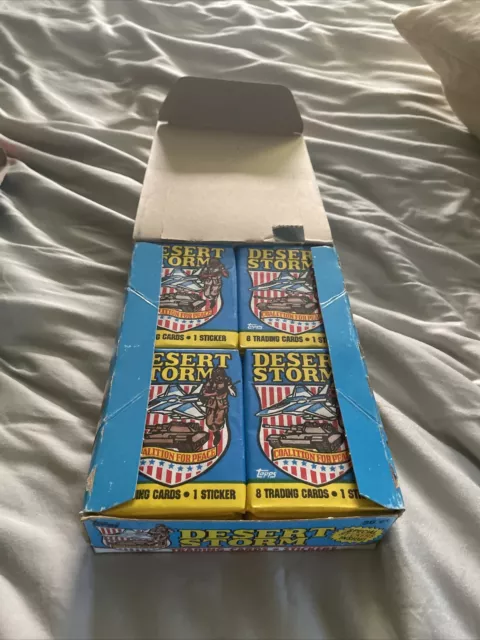
Topps 1991 Desert Storm Trading Cards and Stickers 36 New Sealed Packs in Box
£22.00 Buy It Now 20d 0h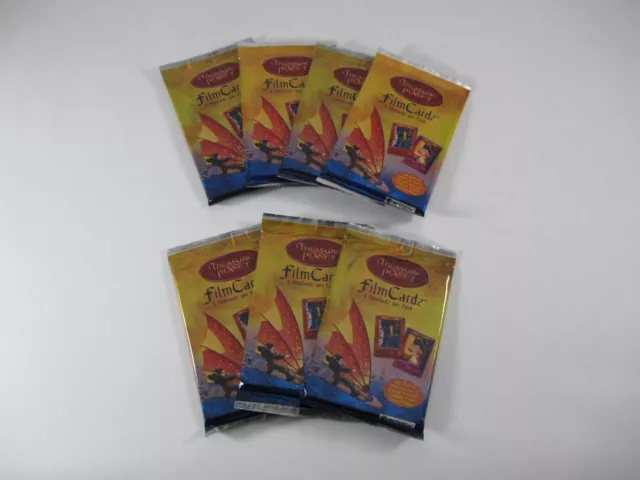
Lot of 7 Sealed Packs of 2002 Artbox Treasure Planet FilmCardz Trading Cards
£9.55 Buy It Now 21d 19h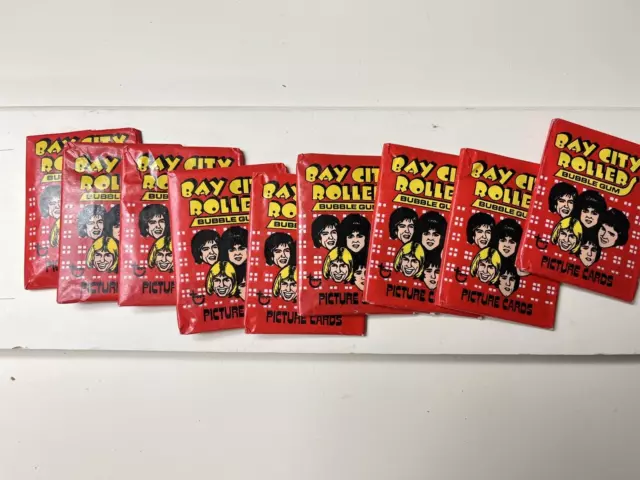
LOT OF 9 1975 Bay City Rollers Topps Trading Card Wax Packs RARE!!! 49 years old
£181.62 Buy It Now 10d 19h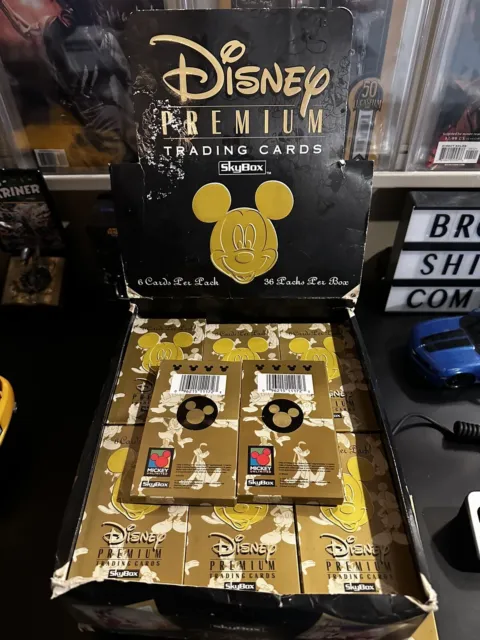
1995 Skybox Disney Trading Cards-Factory Sealed Packs-Rare Price Per Pack
£7.66 Buy It Now 21d 5h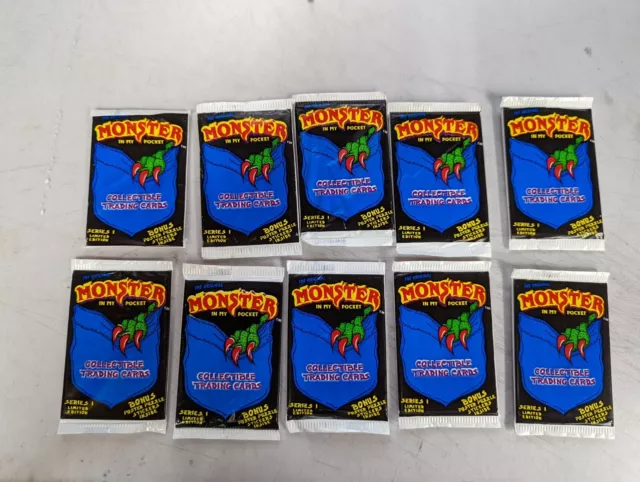
10 SEALED NEW 1991 Monster in my Pocket Trading Card Packs NOS HTF w/ Stickers
£16.73 Buy It Now 30d 18h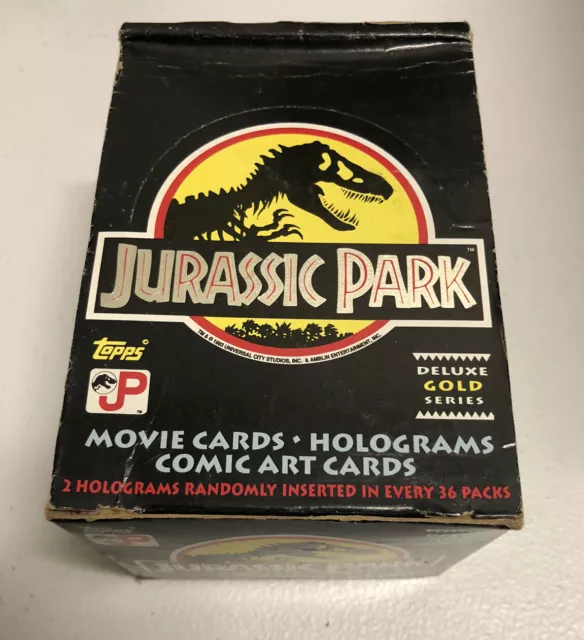
Rare 1992 Topps Jurassic Park Deluxe Gold Trading Card Box 32 of 36 Sealed Packs
£167.33 Buy It Now 16d 10h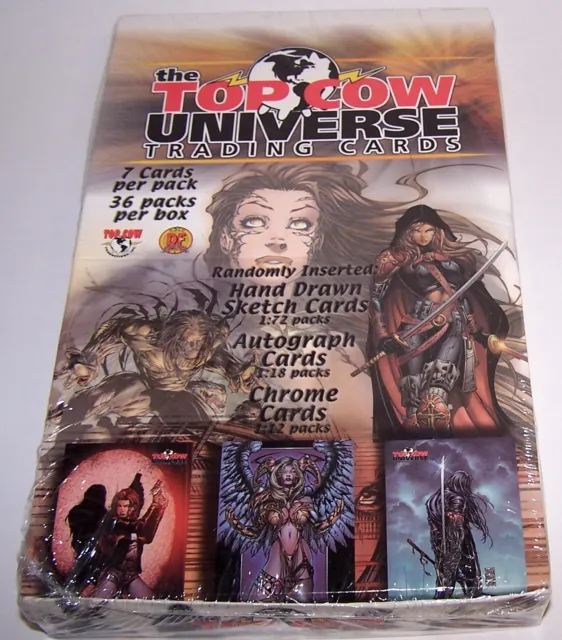
The Top Cow Universe Trading Cards 7 Cards Pack 36 Packs Box Sealed 2002
£143.45 Buy It Now 29d 7h
5 Rare 1991 MARVEL COMICS Impel TRADING CARD TREATS-SEALED BAG-24 Packs-72 Cards
£52.61 Buy It Now 4d 9h
Fleer Ultra 1995 Batman Forever 20 Trading Card Packs Sealed Rare Double Packs
£47.77 Buy It Now 30d 7h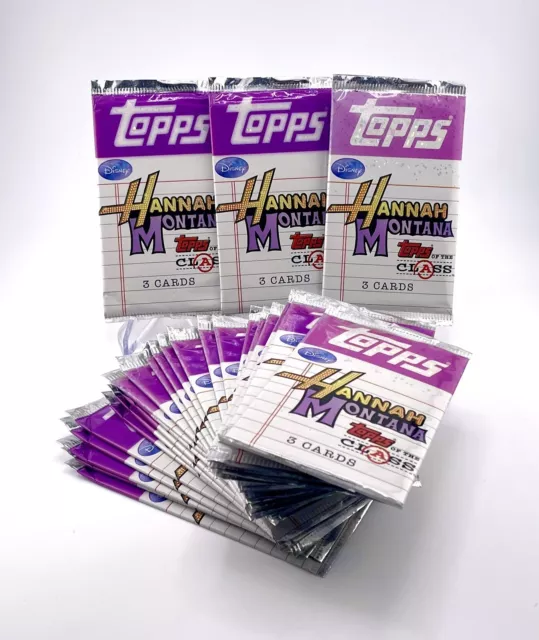
RARE! Hannah Montana Topps Trading Card Promo Packs | 3 Cards Per Sealed Pack
£8.60 Buy It Now 18d 21h
2001 Topps Enduring Freedom Cards & Stickers Sealed lot of 24 Packs In Box
£47.81 Buy It Now 18d 22h
Rare Star Trek Sealed Packs Of Cards From Holland 1982 and Also 4 1975 Stickers
£28.68 Buy It Now 21d 3h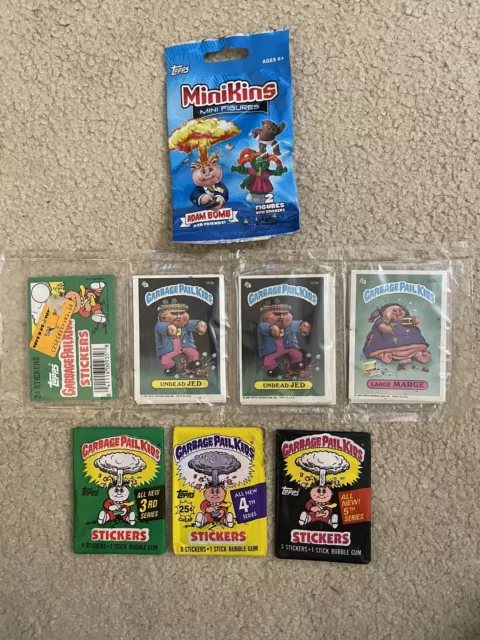
1986 Topps Garbage Pail Kids Series 3 4 5 RACK PACKS 24 STICKERS MINIKINS Sealed
£57.37 Buy It Now 8d 11h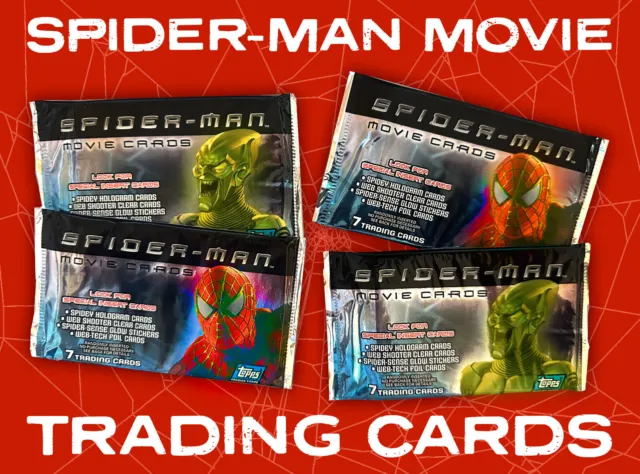
NEW! SEALED Four (4) Packs of 2002 TOPPS Spider-Man Movie TRADING CARDS +2 Cards
£11.92 0 Bids 2d 17h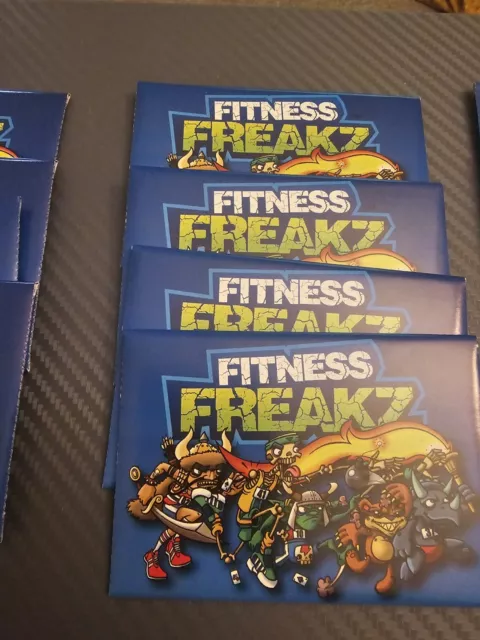
10 Packs Of Rare Fitness Freakz Trading Cards - Sealed 4 Cards Per Pack
£9.95 Buy It Now 30d 1h
Butt-Ugly Martians Trading Cards 2002 Comic Images CVS Lot New Sealed Packs
£19.03 Buy It Now 29d 1h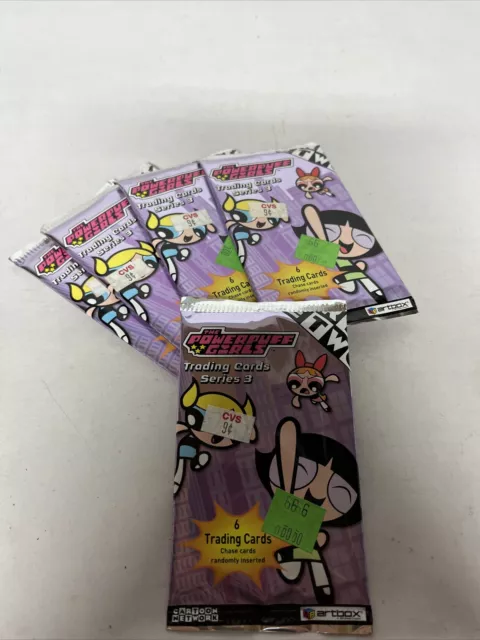
Five Packs New Sealed 2002 Artbox The Powerpuff Girls Series 3 Trading Card Pack
£19.12 Buy It Now 29d 1h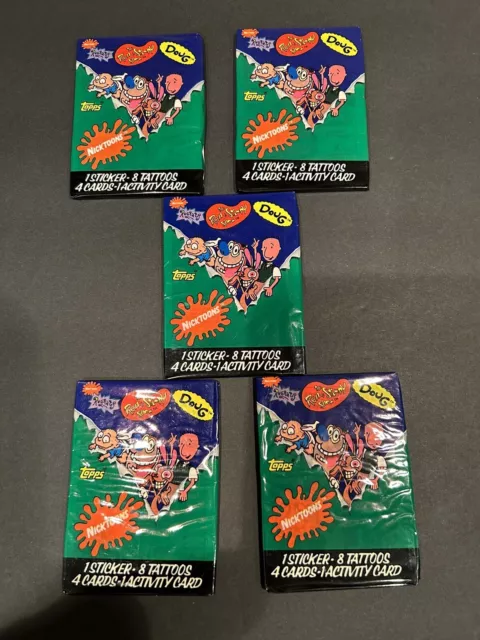
Topps 1993 Nicktoons Trading Cards-5 Sealed Packs-Stickers Tattoos Rugrats Doug
£10.36 0 Bids 3d 6h
2002 Outer Limits Premiere Edition Rittenhouse Trading Card Packs
£9.52 Buy It Now 10d 1h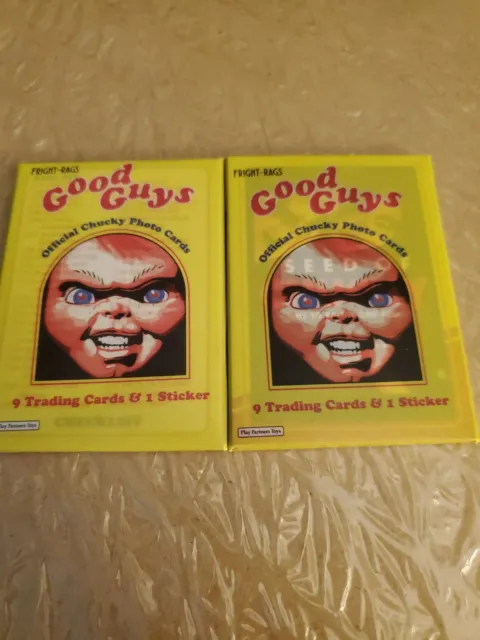
Lot Of 2 Good Guys Trading Card Packs New Unopened Fright Rags Rare
£30.28 0 Bids 1d 9h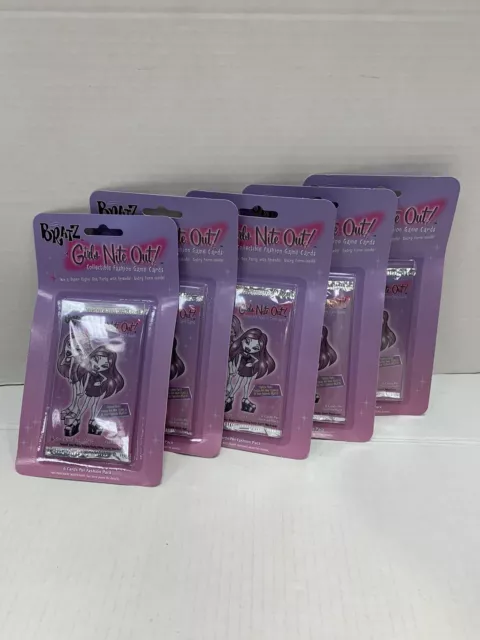
5 packs of Sealed 2004 Bratz girls nite out Trading Cards RARE
£43.03 Buy It Now 15d 22h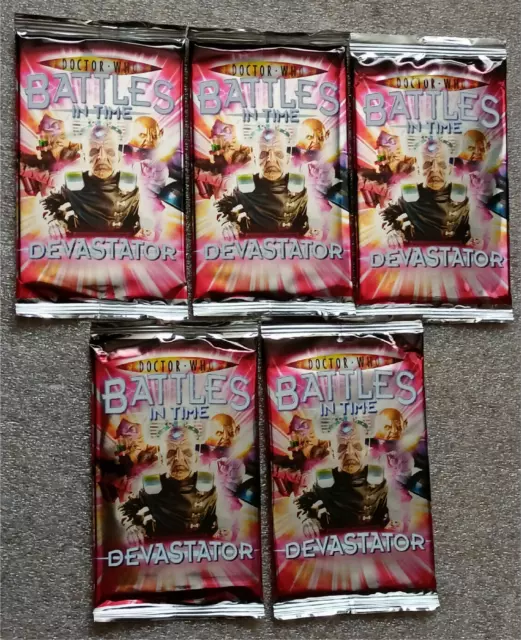
5x Doctor Who Battles In Time Sealed Booster Packs Of Devastator Trading Cards
£55.00 Buy It Now 29d 21h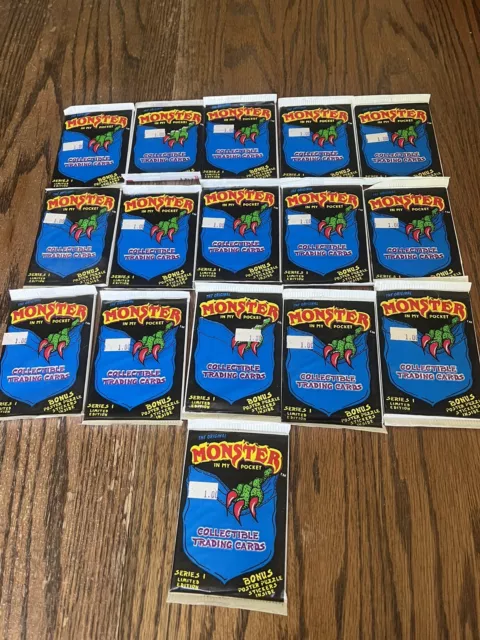
16 SEALED NEW 1991 Monster in my Pocket Trading Card Packs NOS HTF w/ Stickers
£24.85 Buy It Now 28d 10h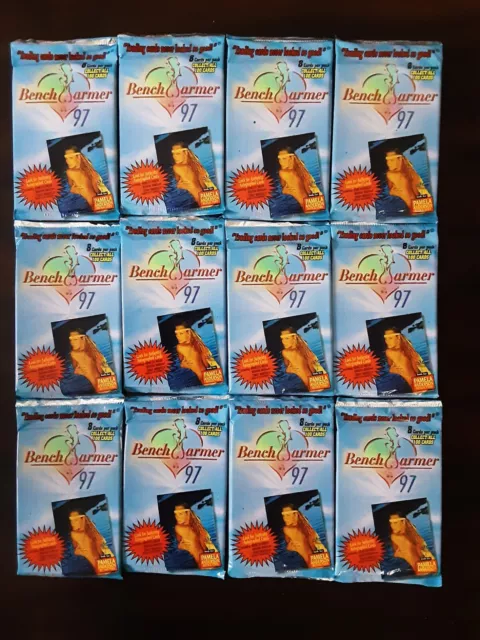
Rare Bench Warmer 97 Trading Cards, 12 Sealed Foil Packs, 8 Cards Per Pack, 1997
£25.28 Buy It Now 18d 17h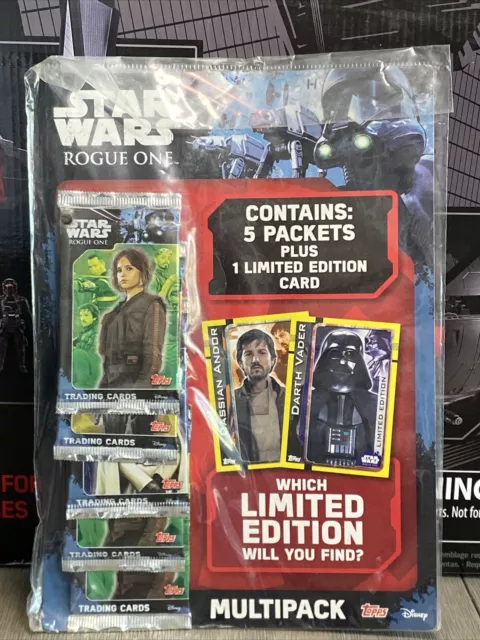
2016 Topps Star Wars Rogue One Multipack Card Packs New RARE Sealed
£81.30 Buy It Now 23d 3h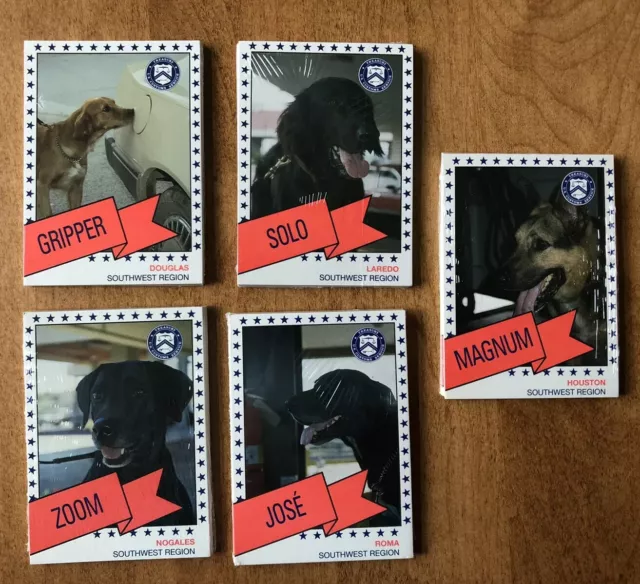
1991 U.S. Customs Canine Enforcement trading cards 5 sealed packs rare
£14.35 Buy It Now 8d 19h
RARE! Vintage, Sealed packs of Hockey Trading Cards plus Yearbook Stickers
£18.64 Buy It Now 18d 1h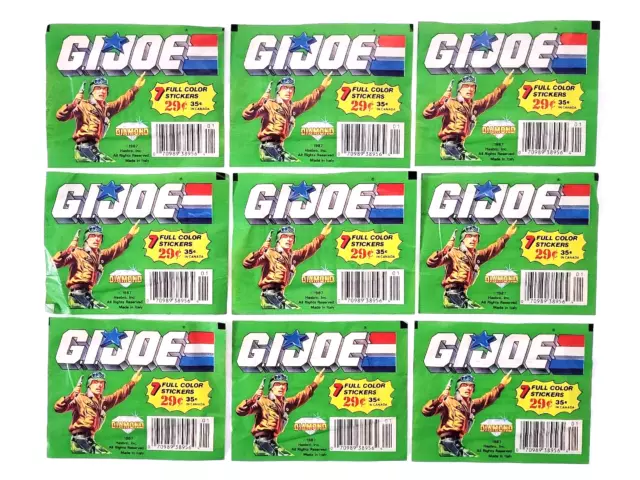
G.i. Joe Diamond Sticker Packs Lot Of 9 Sealed Trading Card Panini Vtg 1987 Rare
£32.12 Buy It Now 21d 6h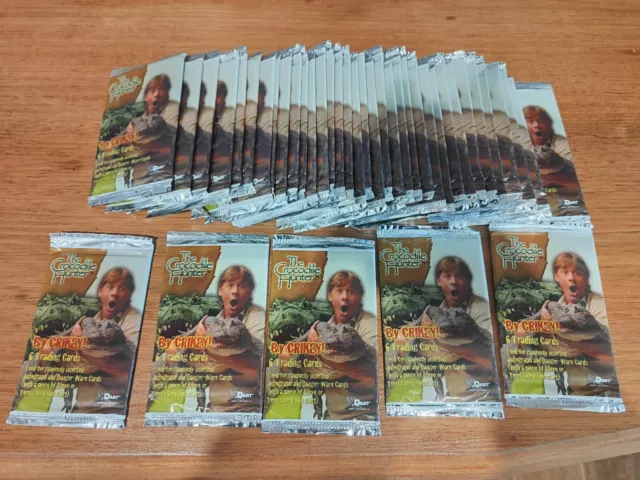
2002 The Crocodile Hunter Dart Trading Cards Sealed Packs x40
£1,159.00 Buy It Now 13d 4h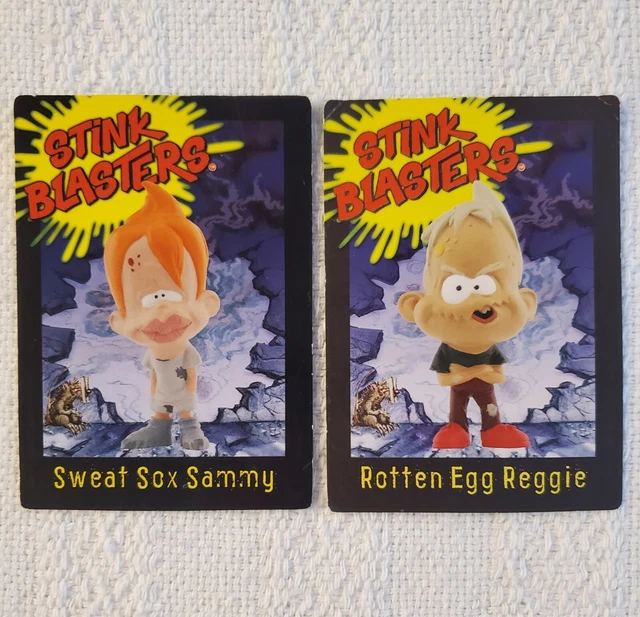
2 Stink Blasters Collector Cards Sweat Sox Sammy Rotten Egg Reggie 2002
£4.78 Buy It Now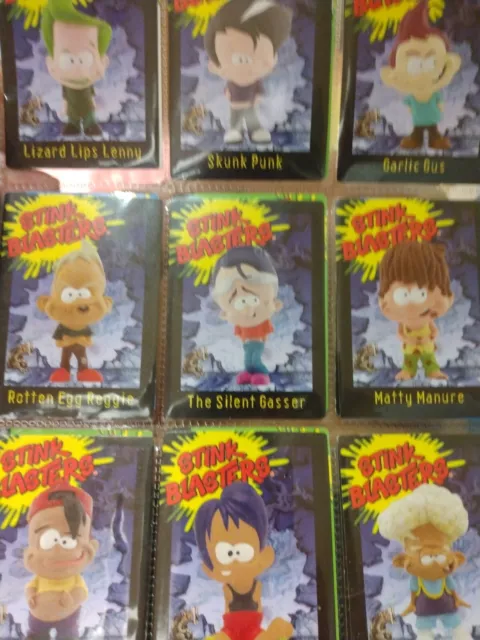
18-Stink Blasters Collector Cards 2002
£9.56 Buy It Now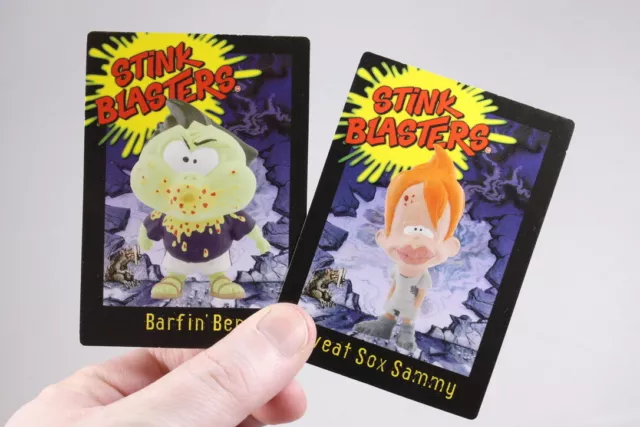 1 watcher
1 watcher2 Stink Blasters Collector Cards 2002 + Sweat Sox Sammy -- Barfin' Ben
£7.60 Buy It Now 2 watchers
2 watchersMEG Stink Blasters Trading Cards Sealed 2002 Stink Stickers Age 5+ (Lot of 24)
£71.72 Buy It Now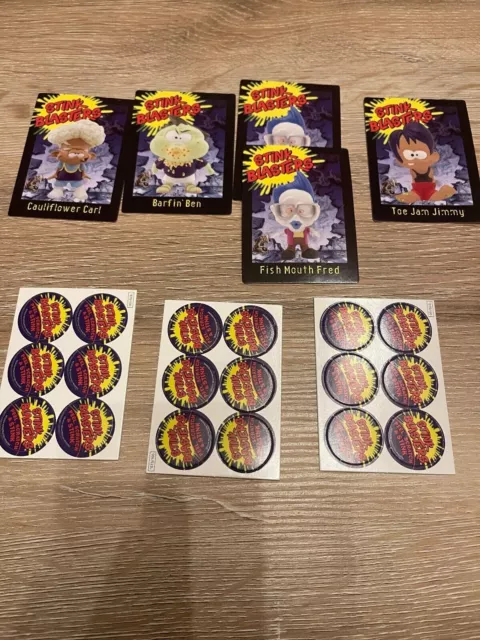
Stink blasters trading cards 5 cards and counters
£7.70 Buy It Now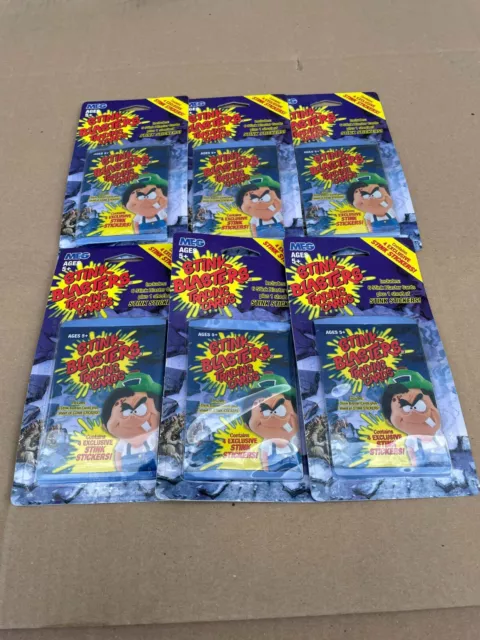 2 watchers
2 watchersMEG Stink Blasters Trading Cards Sealed 2002 Stink Stickers Age 5+ (Lot of 6)
£21.76 Buy It Now 3 watchers
3 watchersMEG Stink Blasters Trading Cards Sealed 2002 Stink Stickers Age 5+ (Lot of 4)
£14.34 Buy It Now
MEG Stink Blasters Trading Cards Sealed 2002 Stink Stickers Age 5+ (Lot of 5)
£19.12 Buy It Now

